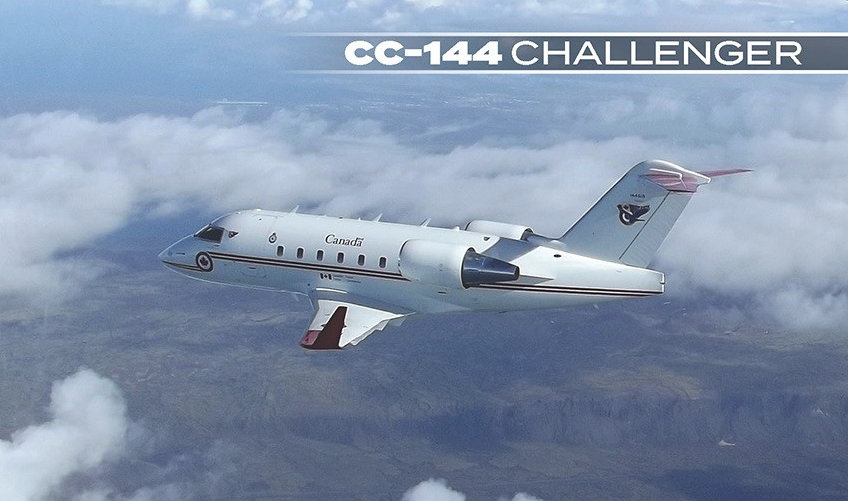AIRFEST 2022 AIRCRAFT
Aircraft flying displays will be ongoing between 10am and 6pm – weather dependent
*Attendance of Aircraft listed, or not, is Subject to Change
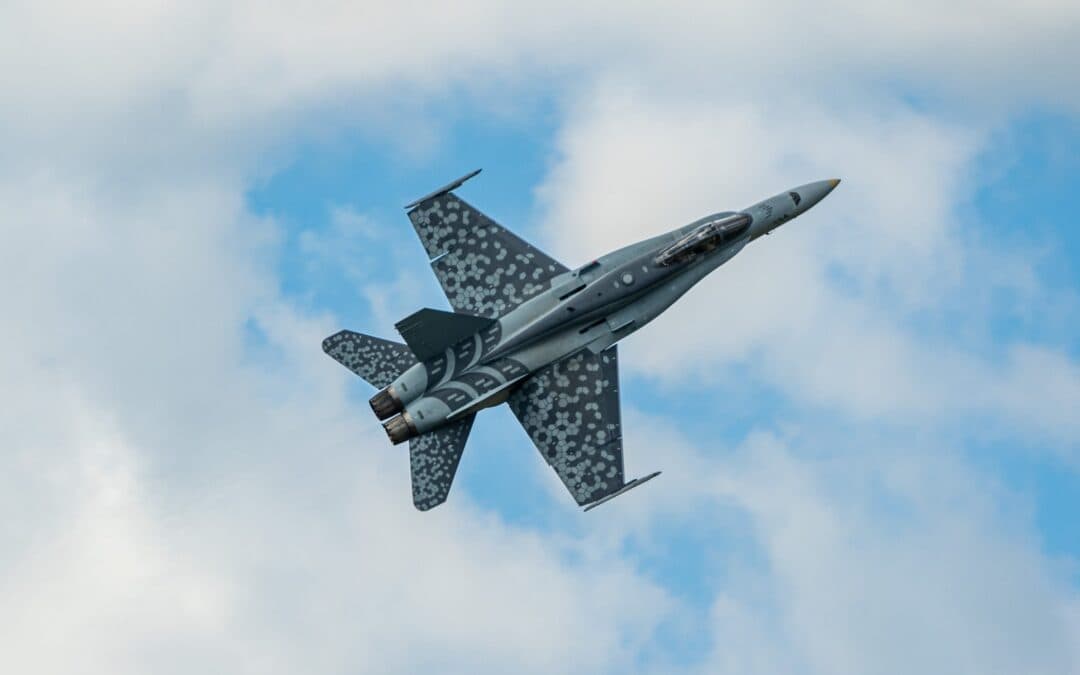
RCAF CF-18
- Maximum Takeoff Weight – 23,400 Kg
- Powerplant -2x F404-GE-400
- Thrust – 10,700 lbf (4,850 kg) each
- Thrust with Afterburner – 16,000 lbf (7,290 kg) each
- Maximum Speed – 1.8 Mach or 1,814 km/h
- Service Ceiling – 15,200m (50,000 ft)
- Range – 3,700 km
*Heritage Flight
B-25J Mitchell Mk III
The North American B-25 Mitchell is an American designed twin engine medium bomber flown by the RCAF during and after the Second World War. The RCAF flew the B-25 Mitchell for training during the war and continued flying operations after the war, in Canada with most of 162 Mitchells received. The first B-25s had originally been diverted to Canada from RAF orders.
*Heritage Flight
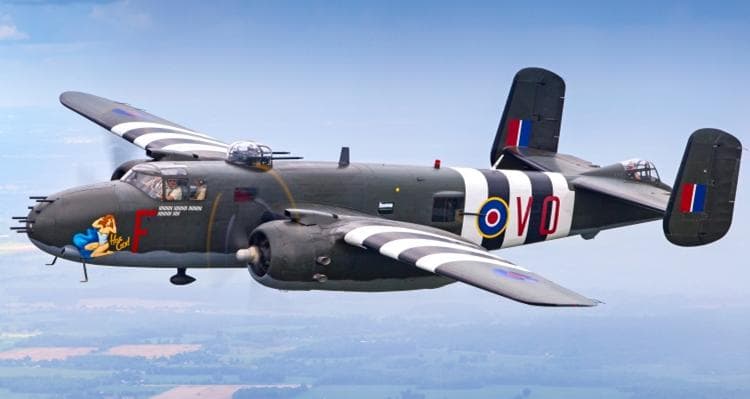
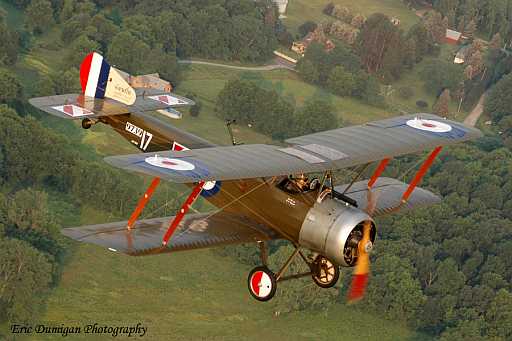
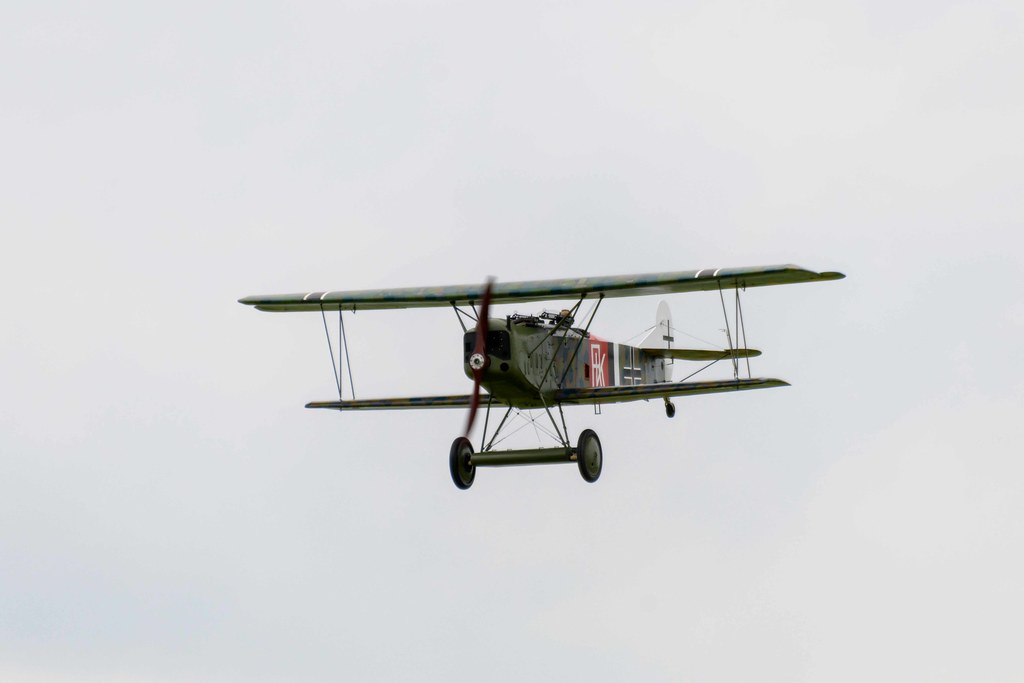
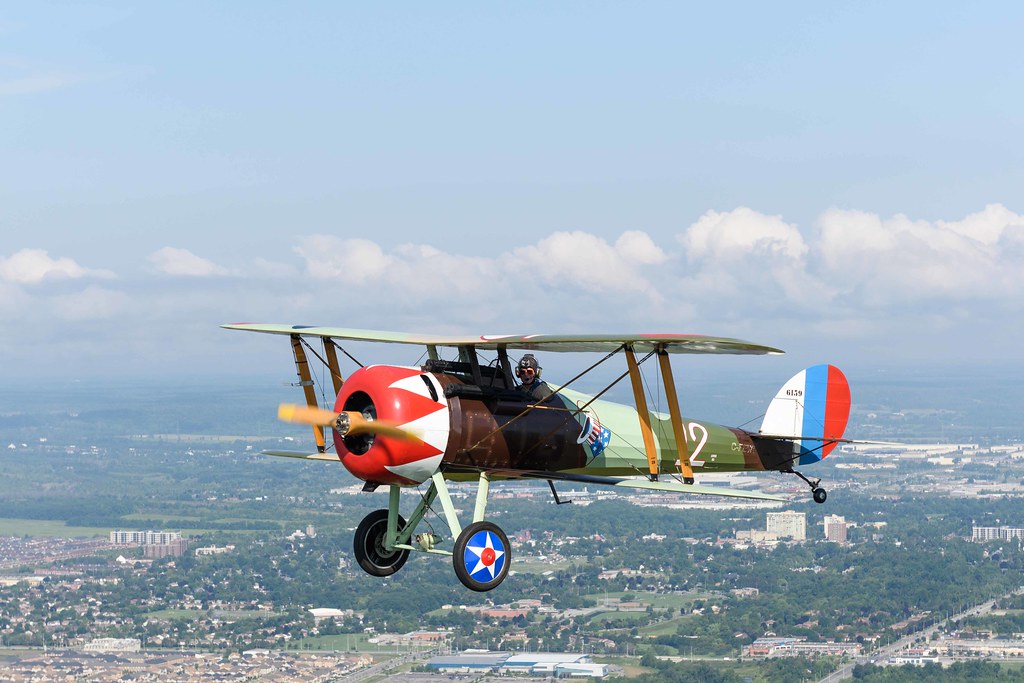
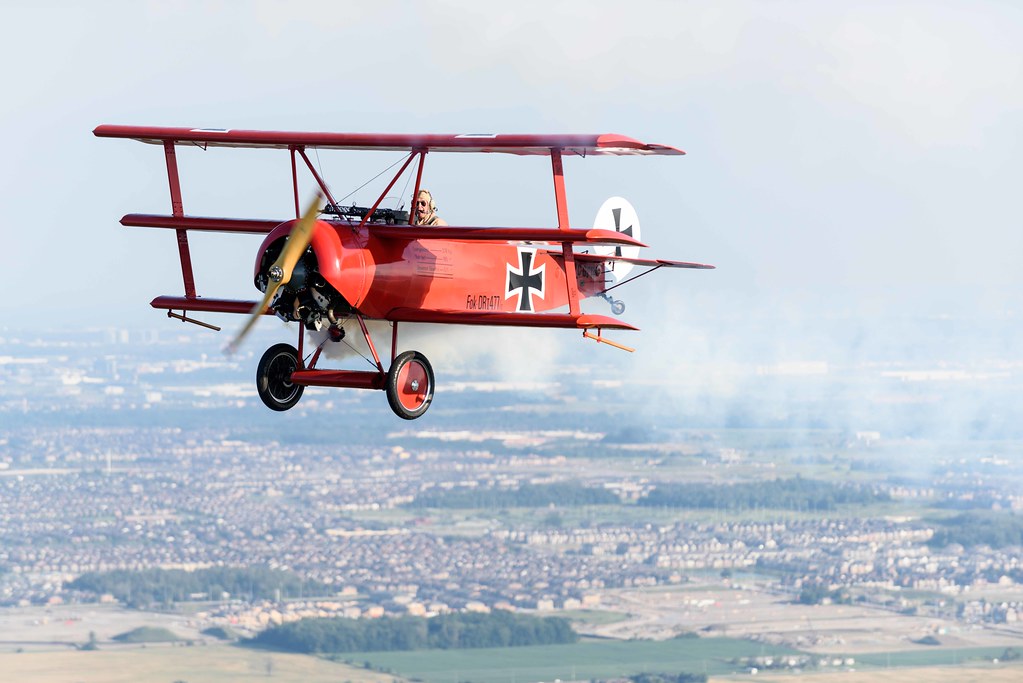
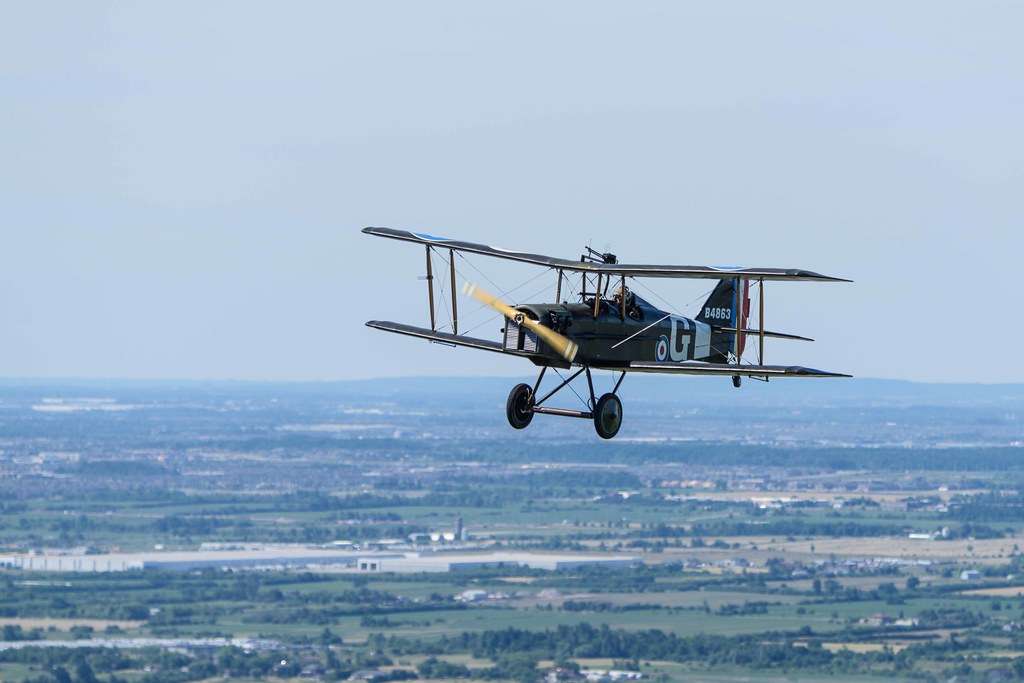
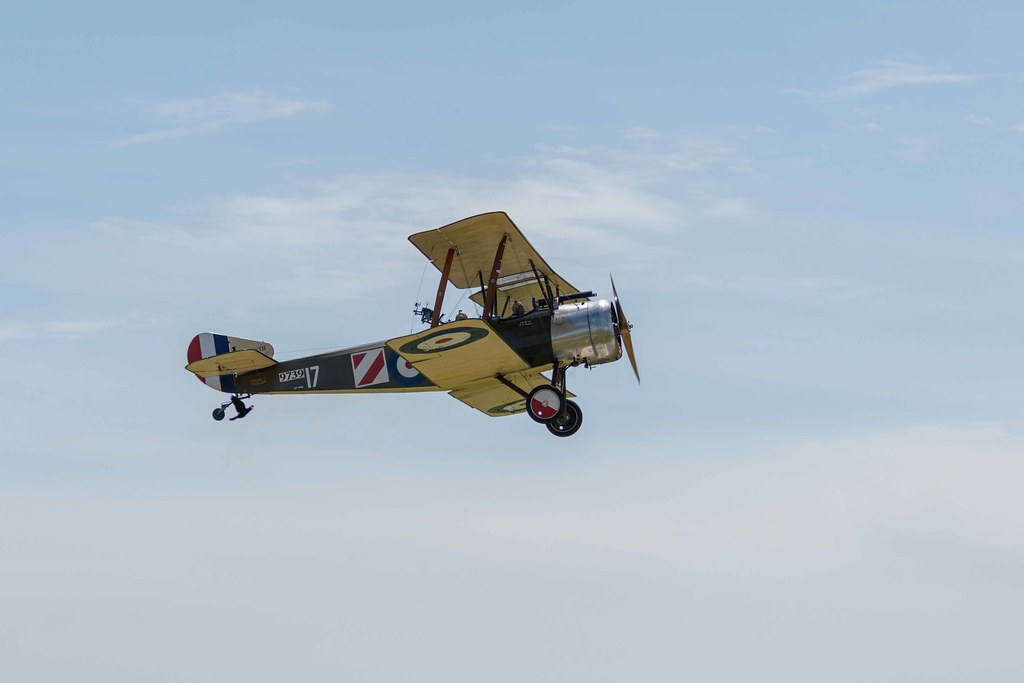
THE GREAT WAR FLYING MUSEUM
*Numerous Aircraft
Our mission is to provide the finest local presentation of World War I aviation history by acquiring, building, maintaining and flying representations of period aircraft as well as displaying period artifacts for the education, entertainment and benefit of our members and the visiting public.
P-51 MUSTANG
“Double Trouble Two”, a North American P-51 Mustang, will be making its first official visit to St. Thomas, piloted by Mackenzie Cline.
This aircraft is a retired RCAF aircraft which served in the 416 Uplands Squadron from 1952-1957 before being retired after an accident. The mustang was acquired in August of 2020 out of Baden, Germany. It was crated and shipped by sea to Florida where it underwent an extensive restoration. It arrived late in the summer of 2021 to CYCK Chatham-Kent and its new owner, Peter Timmermans of Blenheim, Ontario, an aviation enthusiast, and pilot.
Instagram: Double Trouble Two (@stampede_p51) • Instagram photos and videos
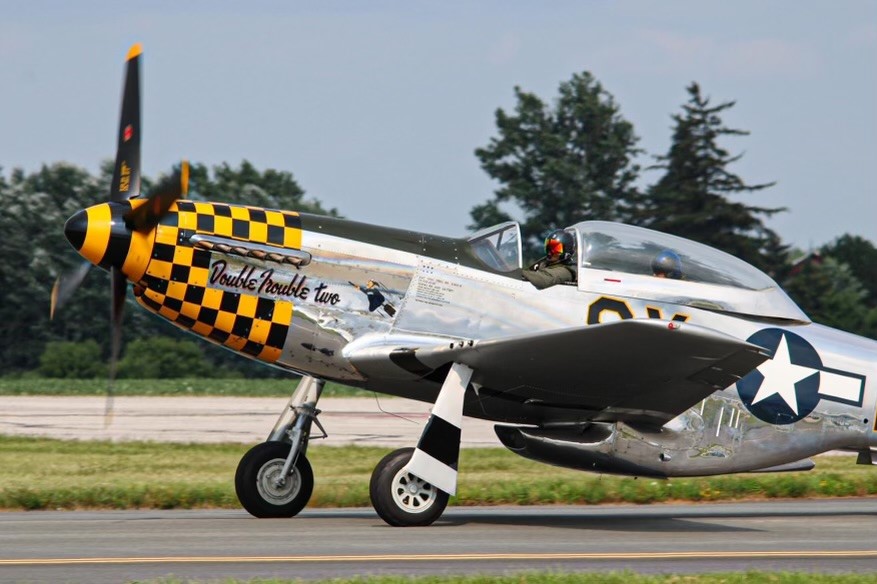
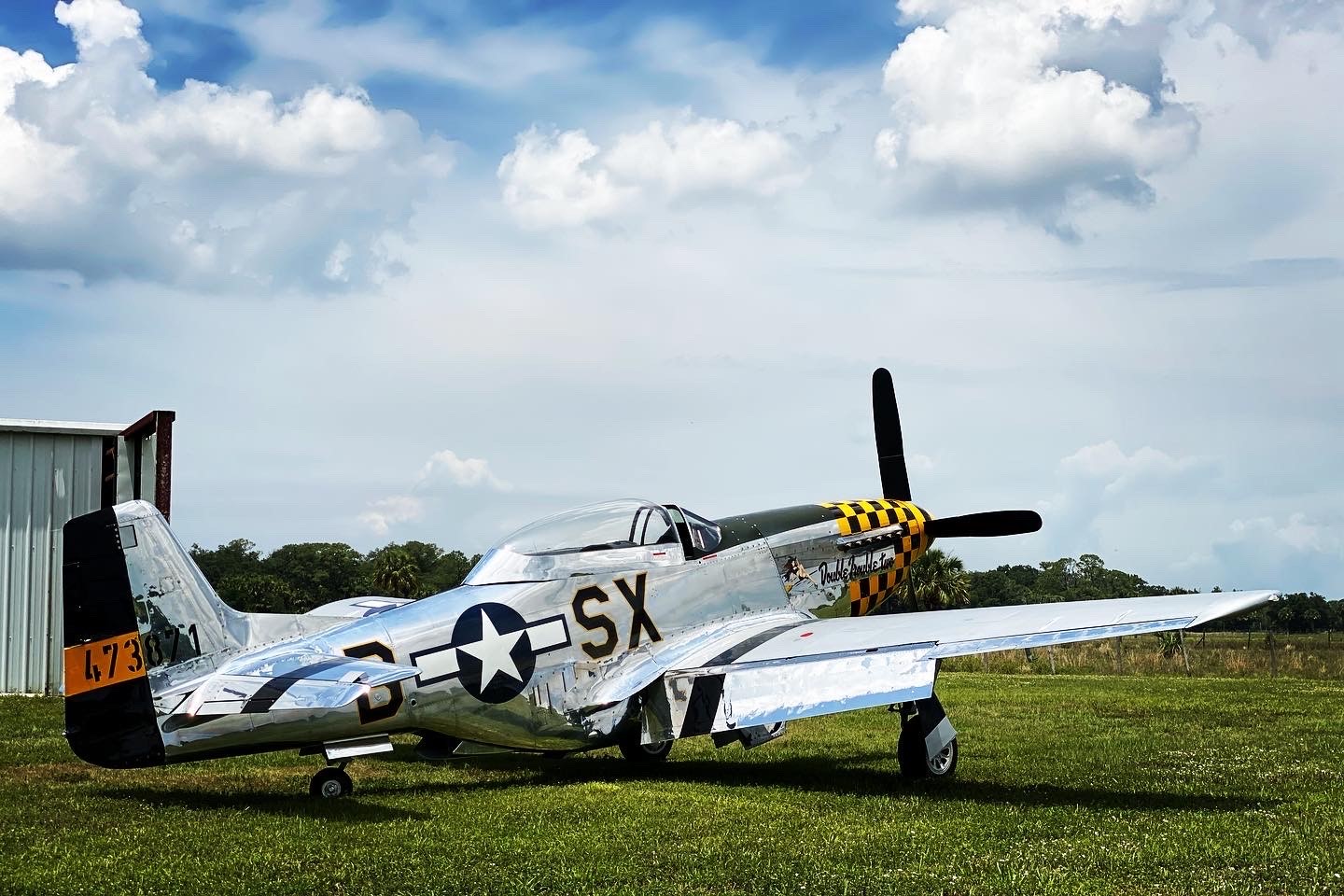
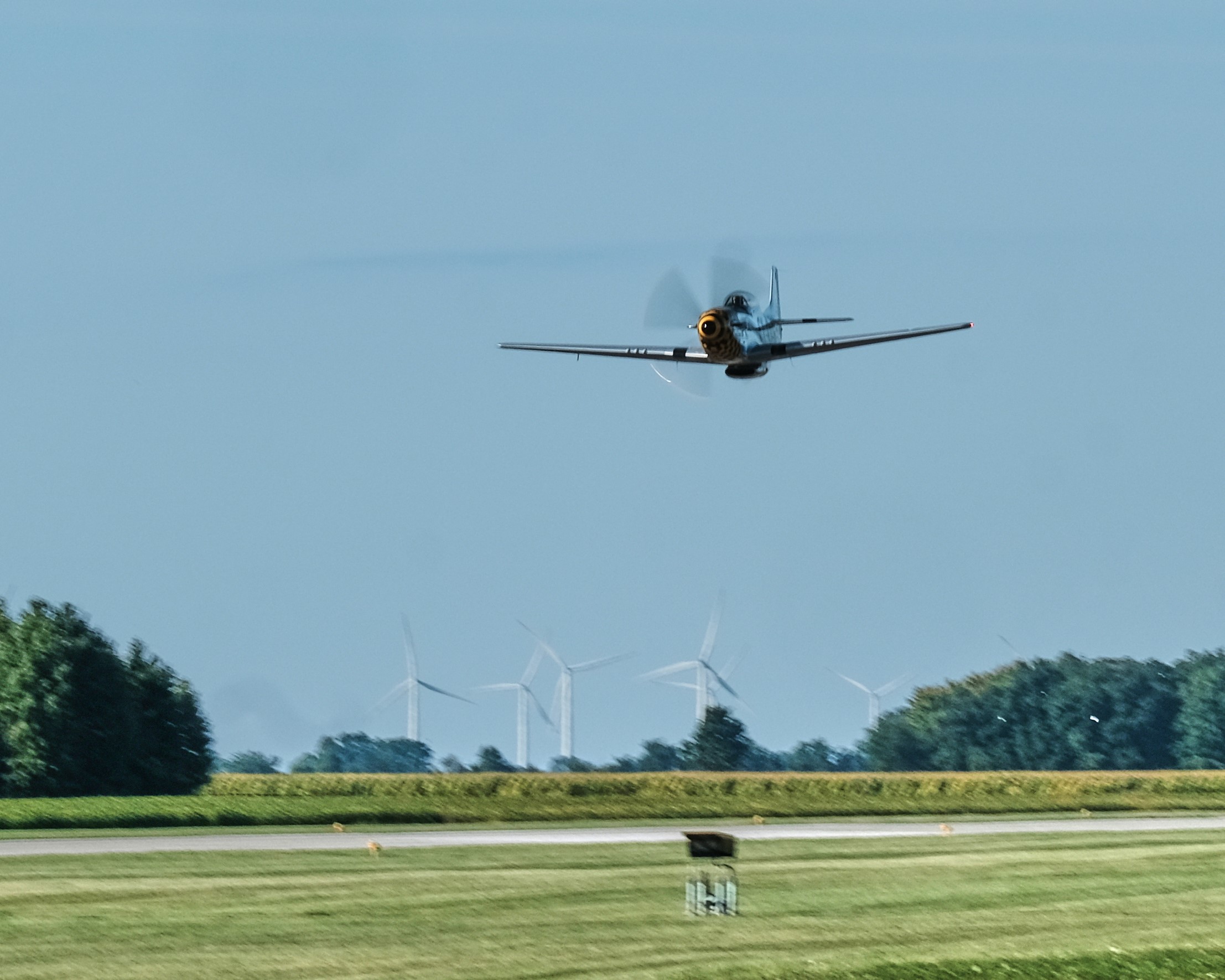
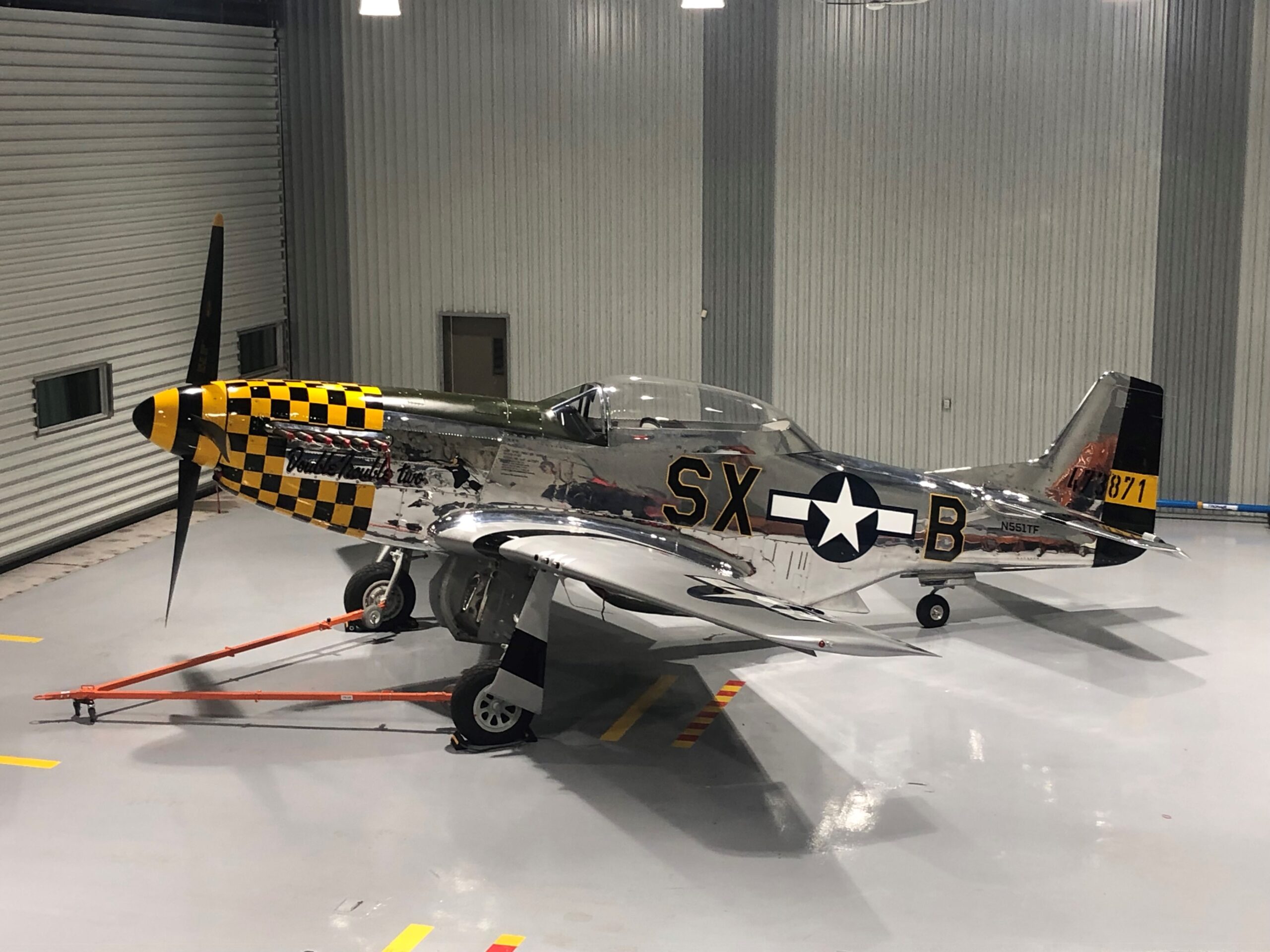
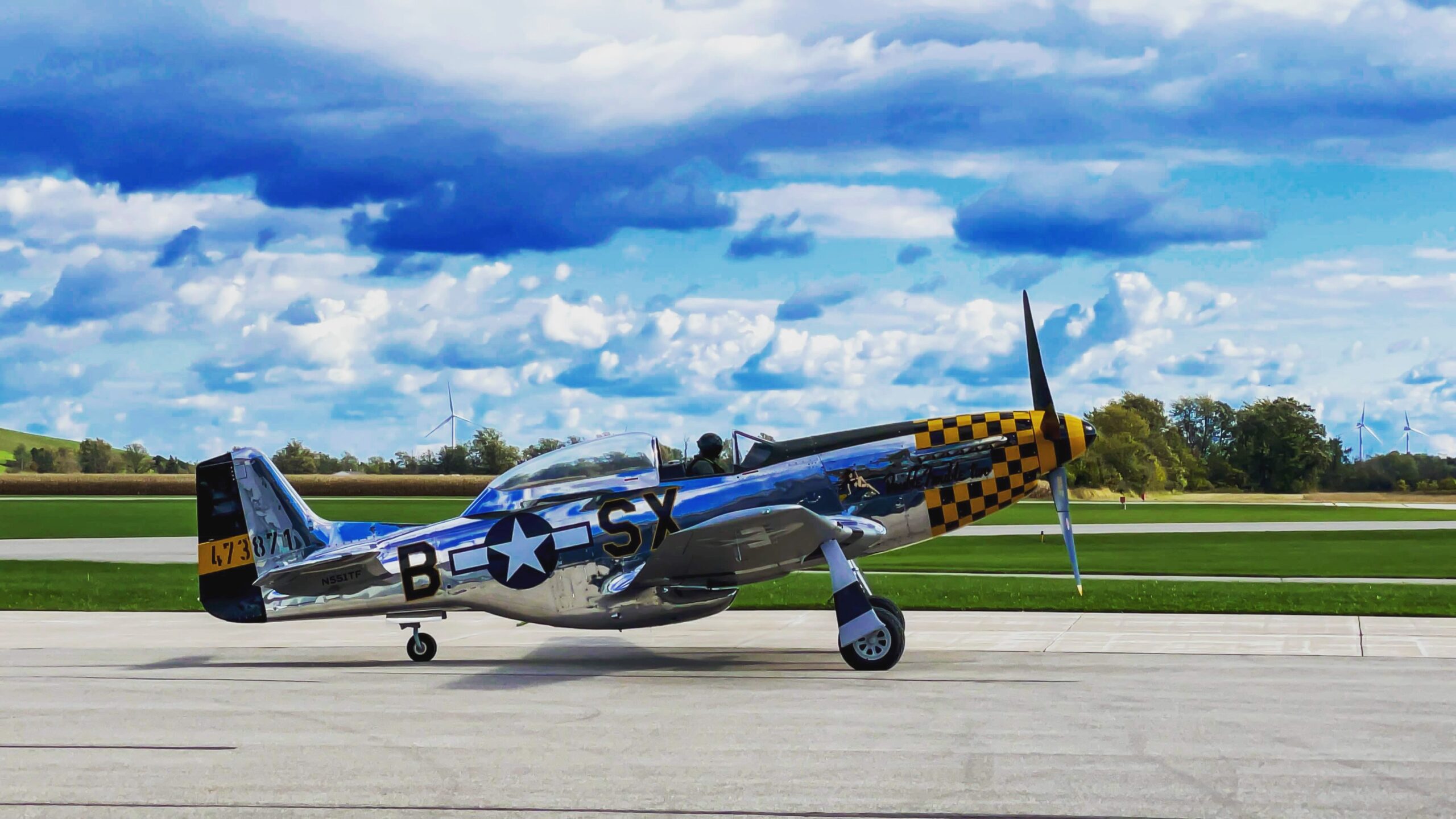
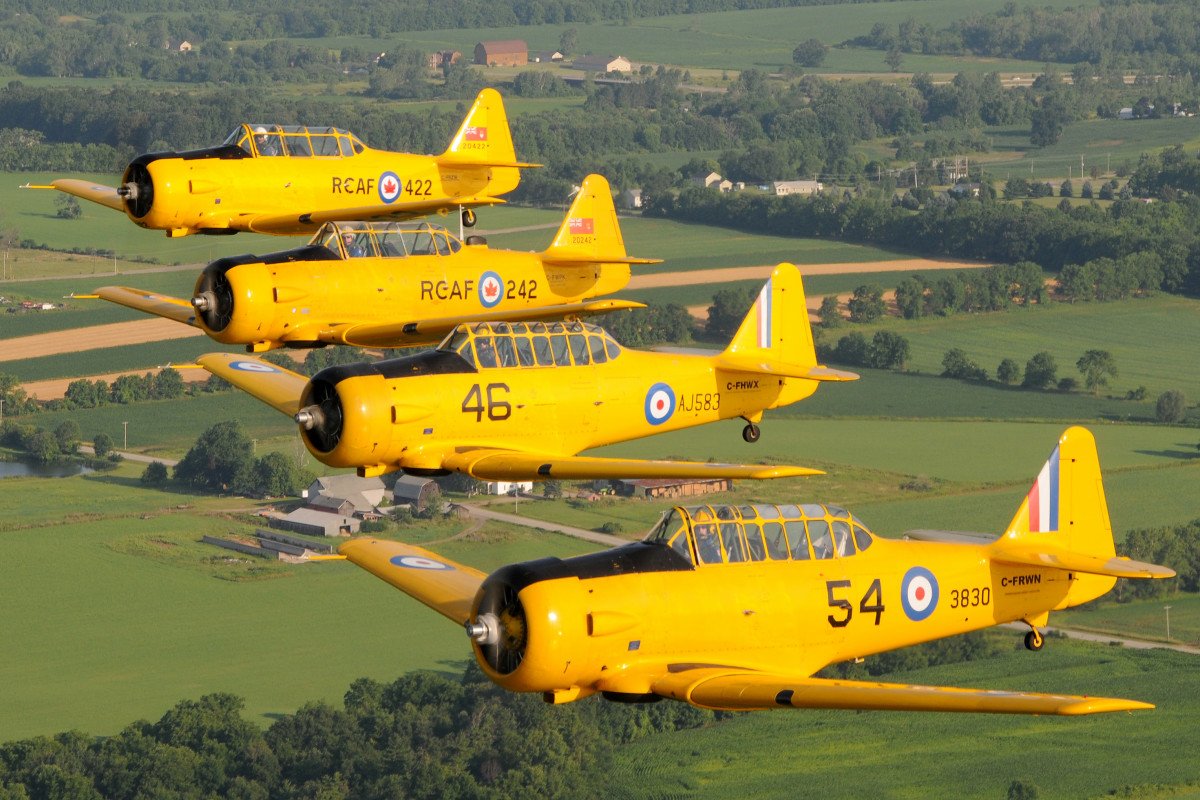
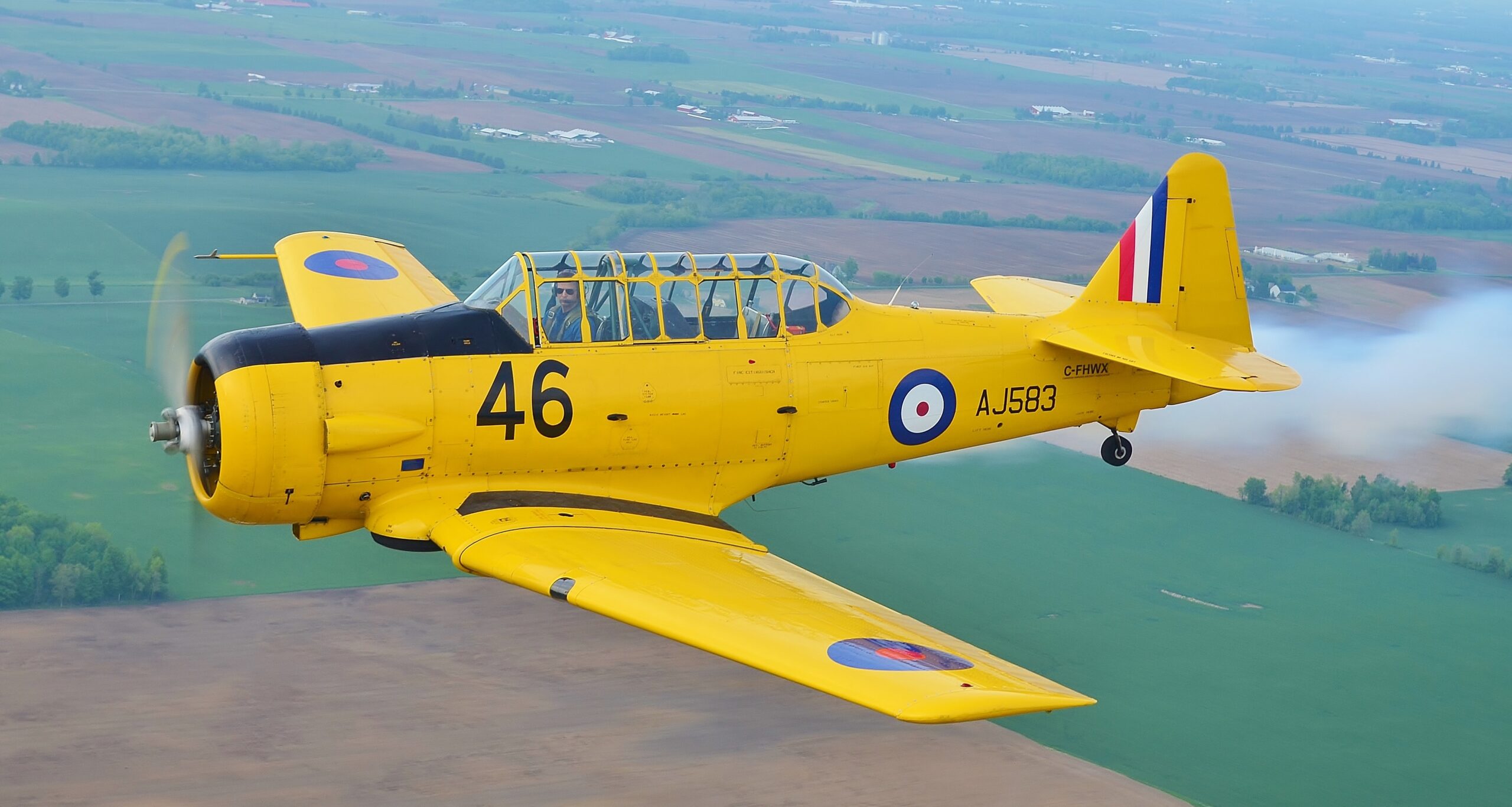
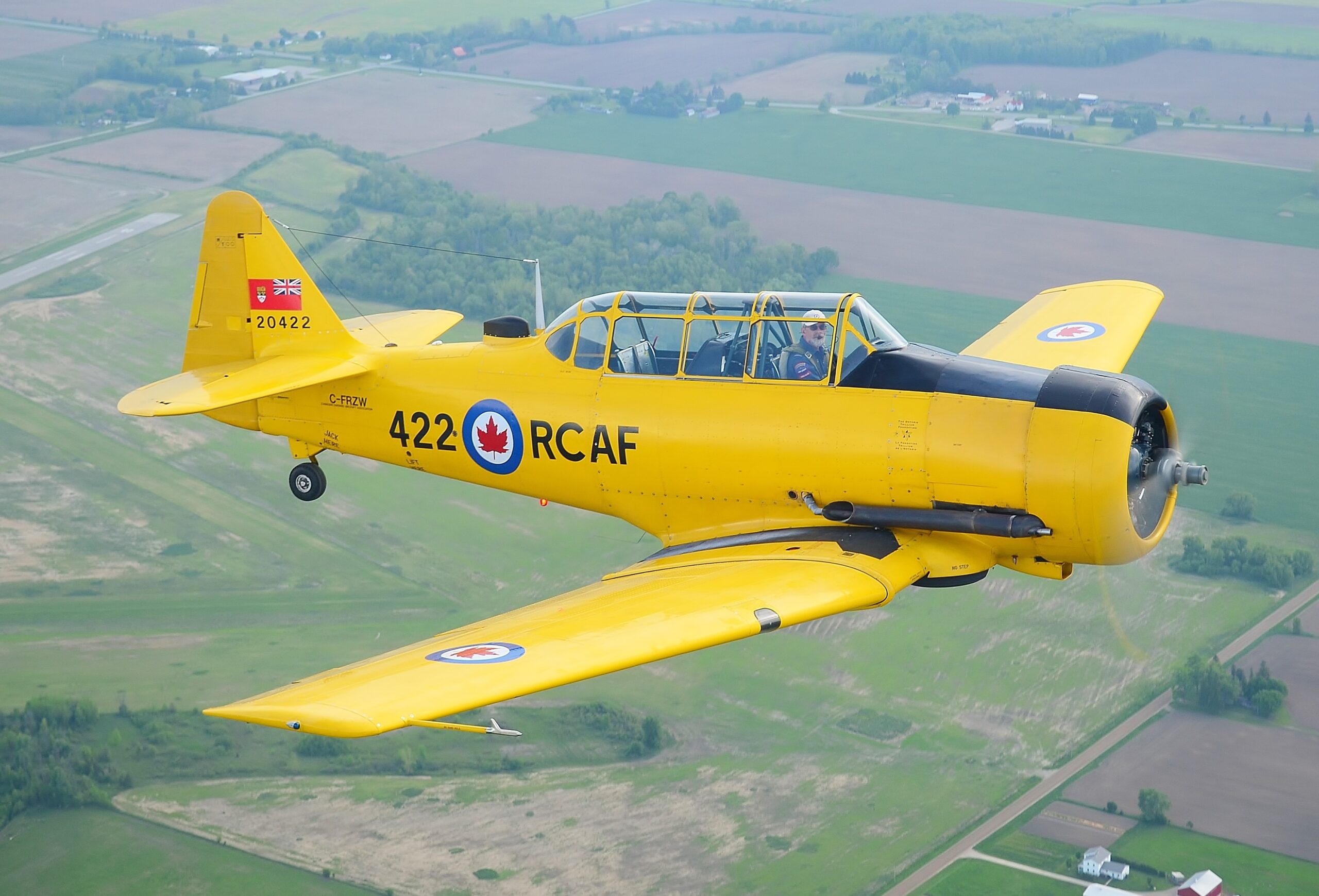
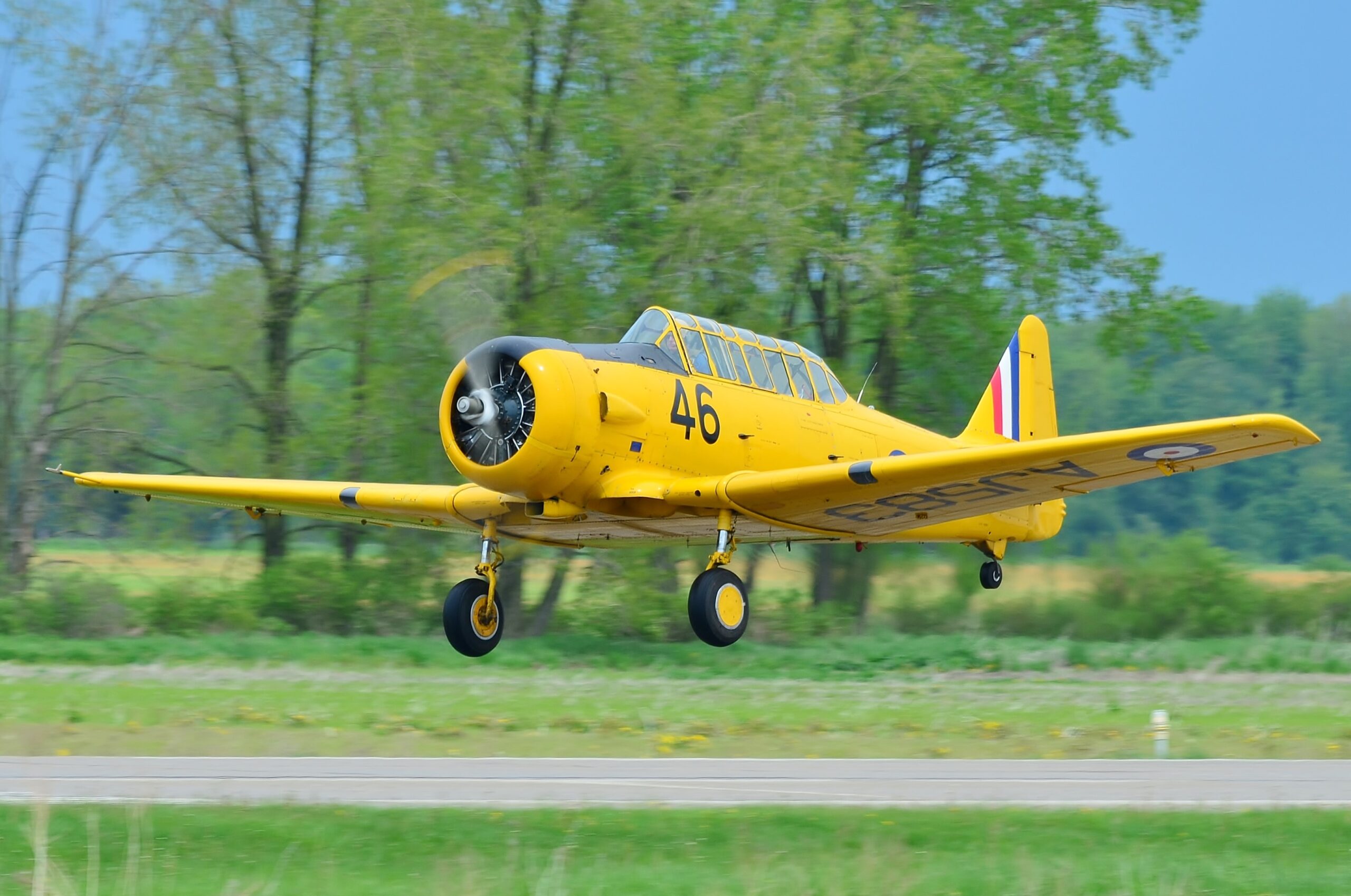
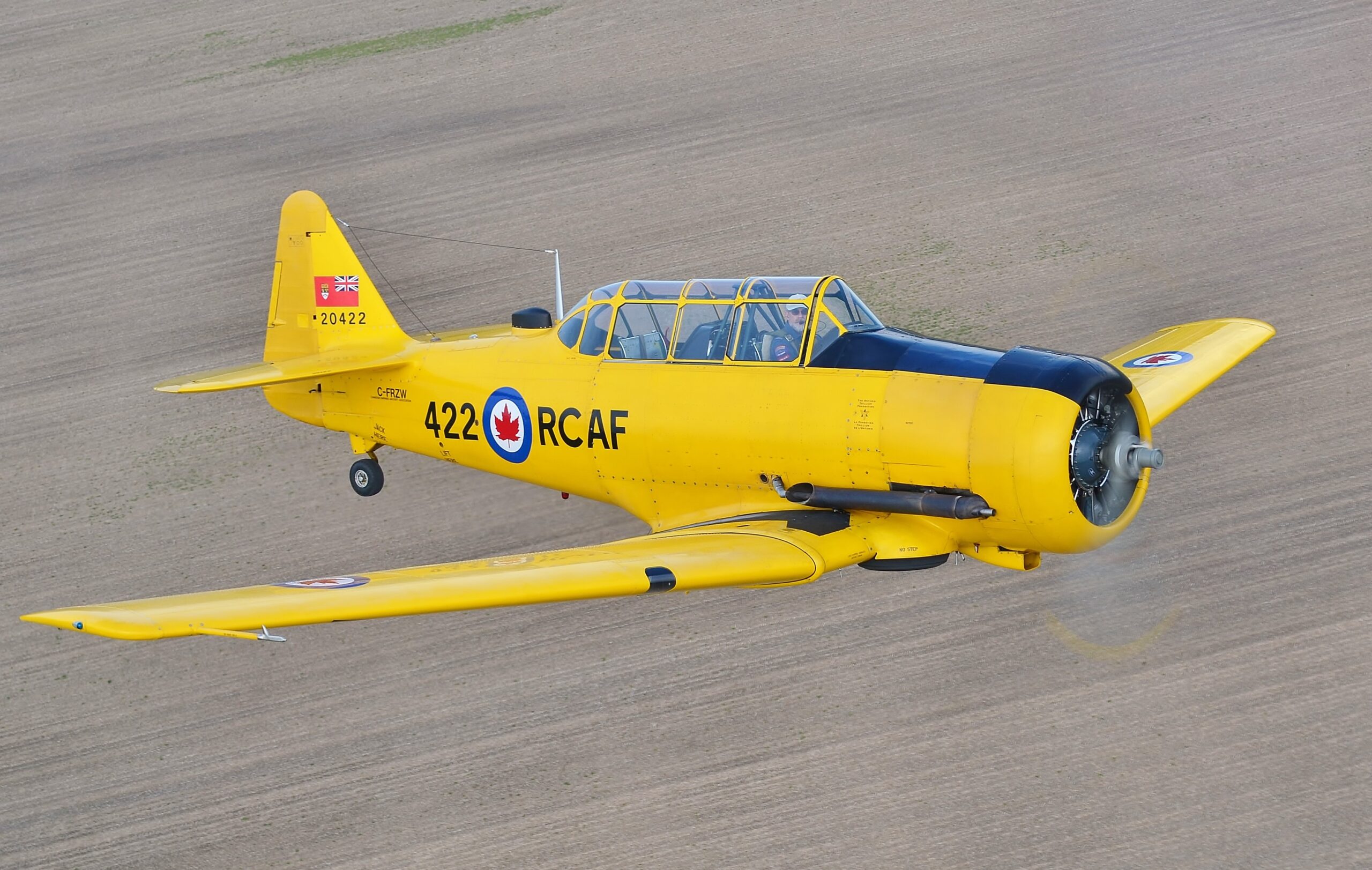
Harvard
The North American Aviation Harvard (or AT-6 “Texan” or SNJ as it was known in the U.S.) was the most advanced single-engine aircraft used to train more than 130,000 aircrew as part of the British Commonwealth Air Training Plan in Canada during the Second World War. With its distinctive roar, the Harvard was a familiar sight and sound at air bases across the country. Once prospective pilots were trained on smaller aircraft, they would go on to the heavier and more powerful Harvard. If they mastered the Harvard, it was on to fighter planes such as Spitfires and Hurricanes or they got their multi-engine rating for bombers.
The Canadian Harvard Aircraft Association is an all volunteer group based in Tillsonburg with a mission to acquire, preserve, restore, maintain and demonstrate the Harvard and other training aircraft associated with the BCATP and the RCAF. For more information, visit www.harvards.com .
BAC JET PROVOST T4
The Jet Provost was developed from the Percival Piston Provost into a Jet by Hunting Aircraft, who made the Jet Provost Mk1 to gain interest from the Royal Air Force and then used the Mk1 & Mk2 as a development aircraft to further the final specification. The first production Jet Provost was the Mk3 which went into full production in late 50’s, but then the need for more speed and height forced the development of the Mk4 (T4). This Jet Provost T4 went into service 1963 (New) and left the RAF in 1993. There are currently only 5 flying examples worldwide and this is the only one in Canada. This Jet Provost T4 was utilized by RAF No1 Tactical Weapons Unit (TWU) as an advanced flight trainer.
The Mk4 uses the Rolls Royce Viper 202 jet engine with 2500Lbs thrust compared to Mk3 with only 1750Ibs. The Jet Provost (JP) with the RAF was the first aircraft in the world to be designed and used as an “All Jet” Trainer which meant a student Pilot started flight training from day one on a Jet with no previous flying experience!

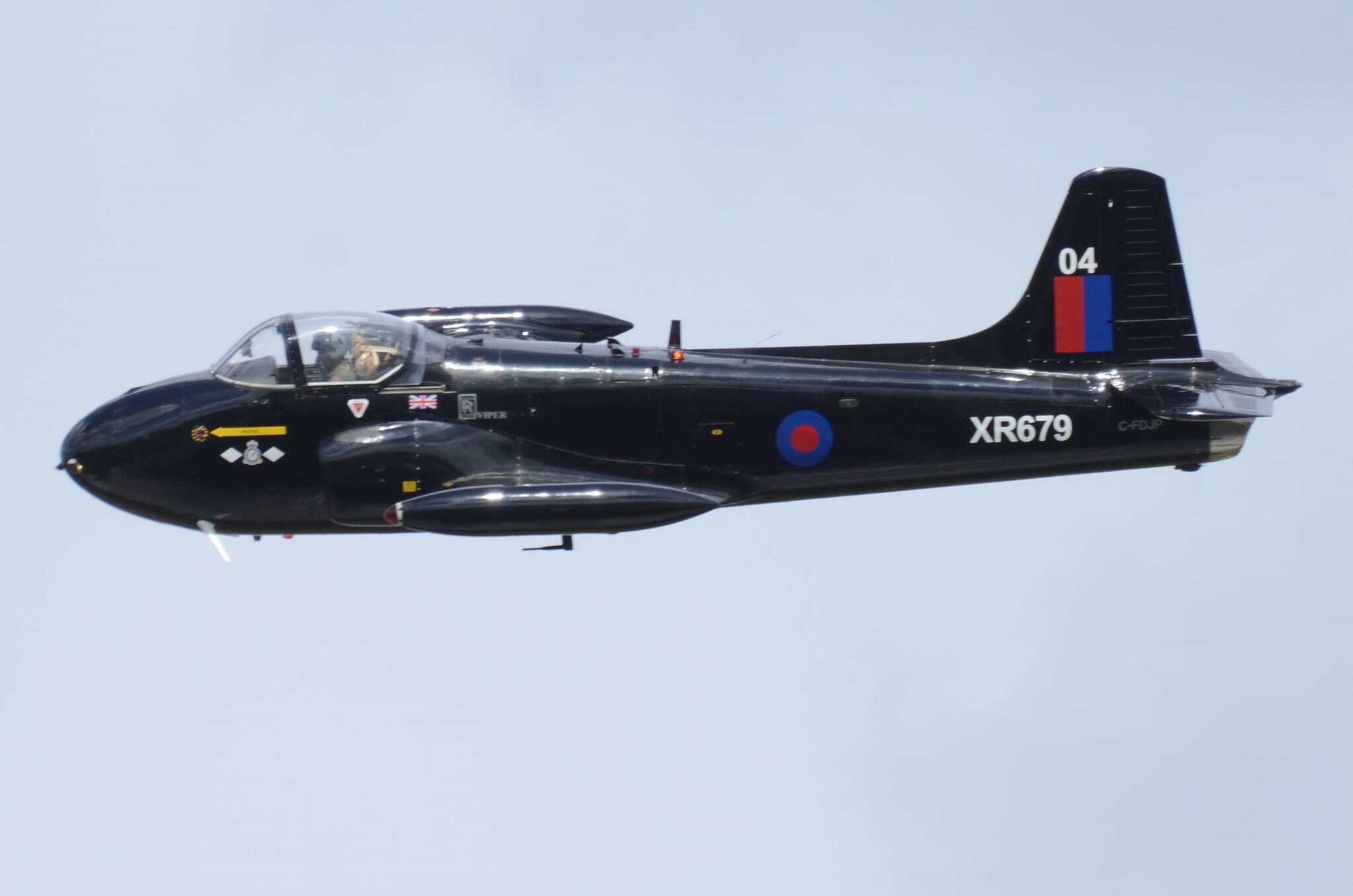
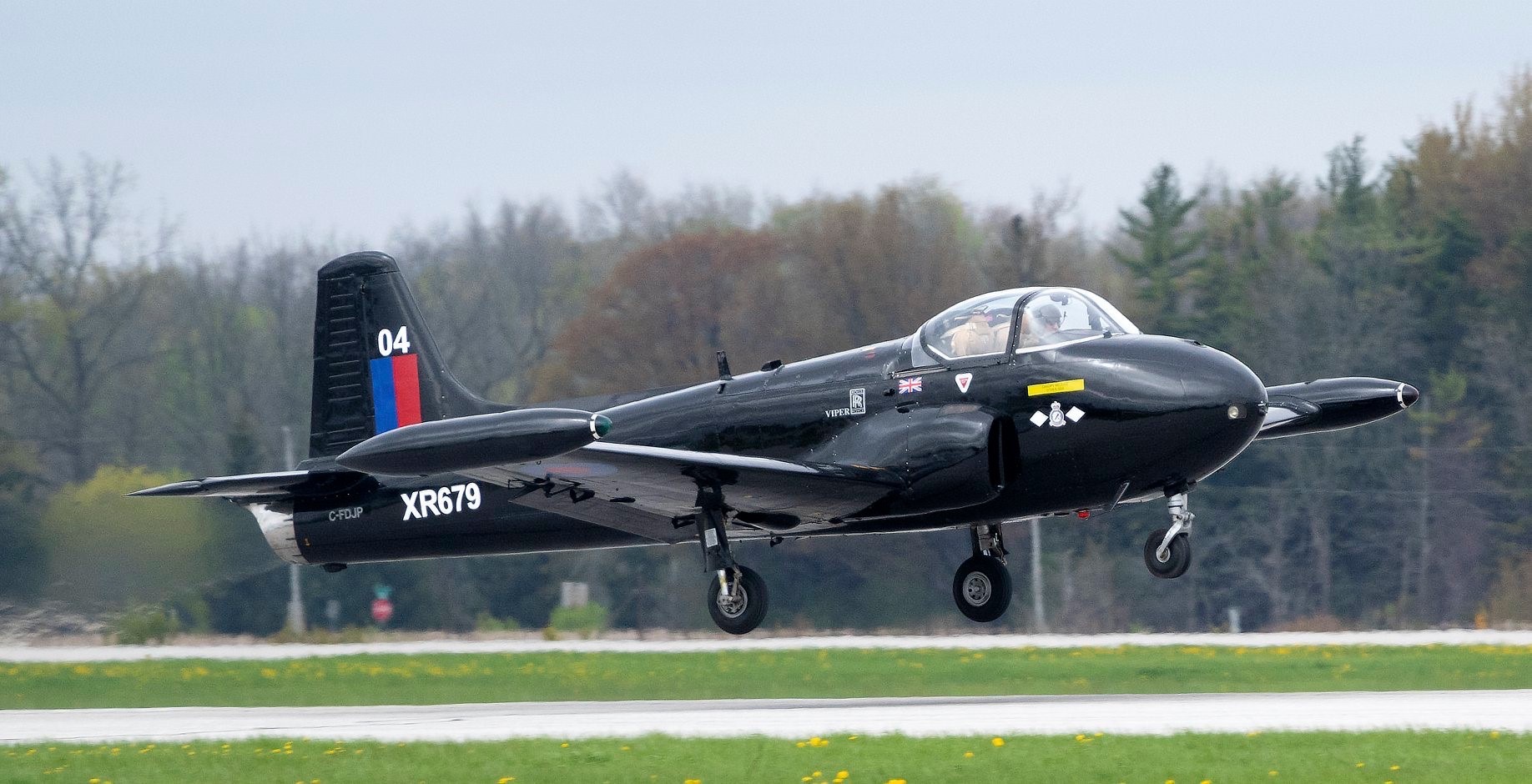
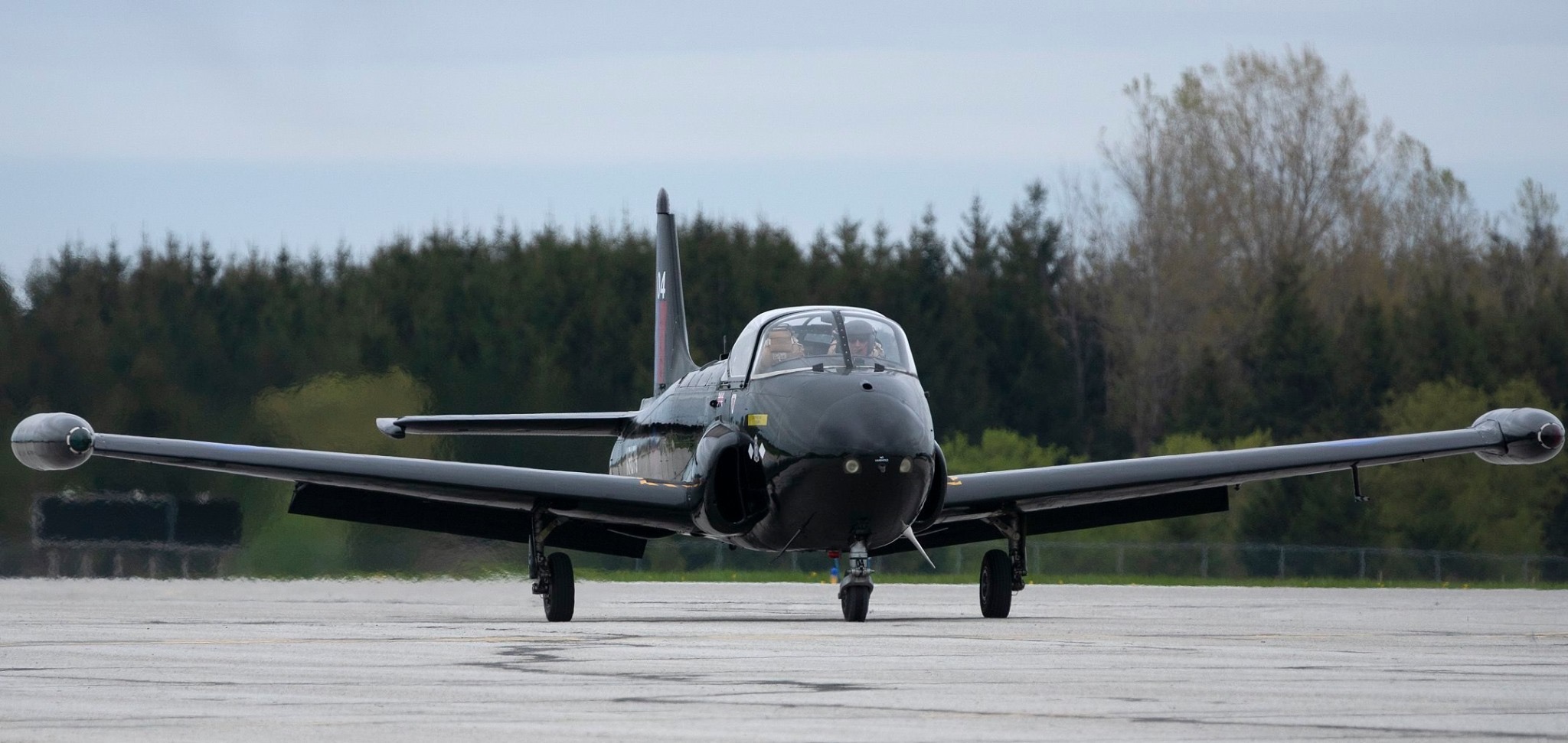
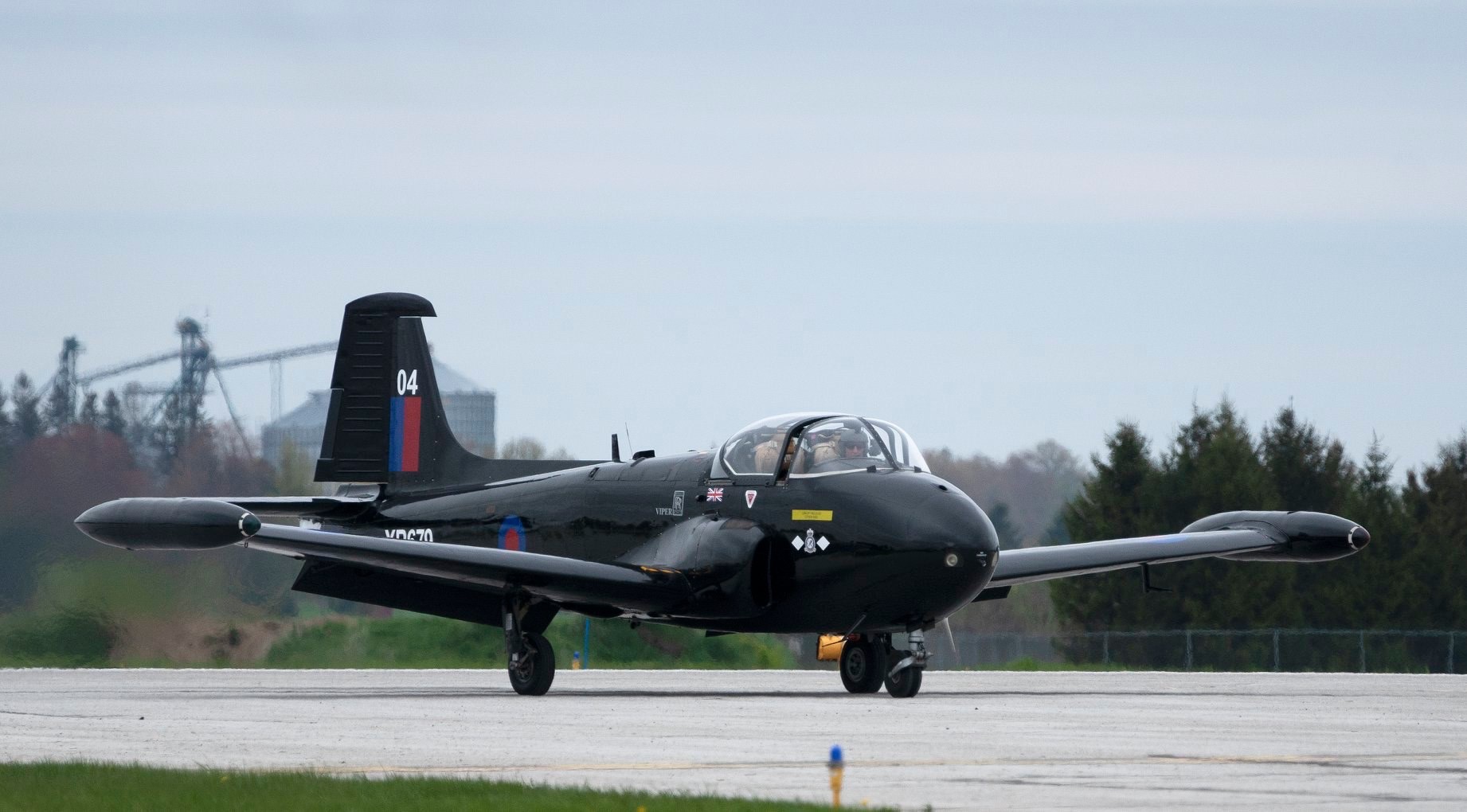

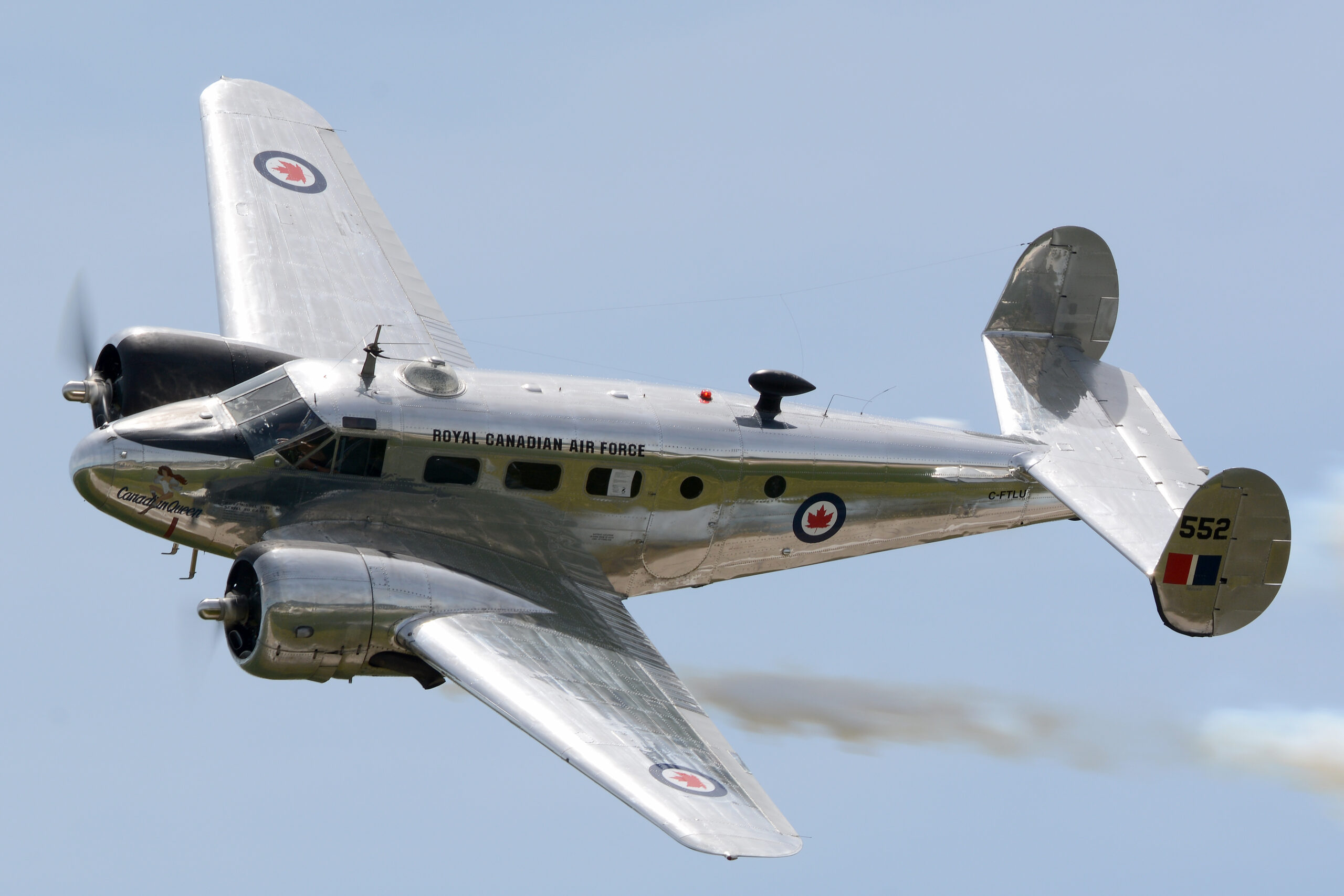
EXPEDITOR 3NM
"CANADIAN QUEEN" CA-152
STEARMAN (C-FBBS)
Lloyd Stearman formed the Stearman Aircraft Corporation in 1927 and established a factory in Wichita, Kansas. Stearman Aircraft became a subsidiary of Boeing in 1934.
Over 8,000 of the aircraft were built. No other biplane was ever produced in such numbers and hundreds remain airworthy. In the immediate postwar years they became popular as crop dusters, sports planes, and for aerobatic and wing walking use in air shows.
Stearman C-FBBS is a 1943 Ex-US Navy Model N2S3 restored in 1990 to the US ARMY AIR CORPS livery as a B75N1 with the modification to the more powerful Lycoming R680-13 -300 Hp radial engine by the Wien Family.
Stearman C-FBBS is based in Woodstock, ON. David Hewitt in 2016. David acquired this Stearman from the Wien family with the promise to maintain her legacy as a historical primary trainer in USA and Canadian Aviation History.
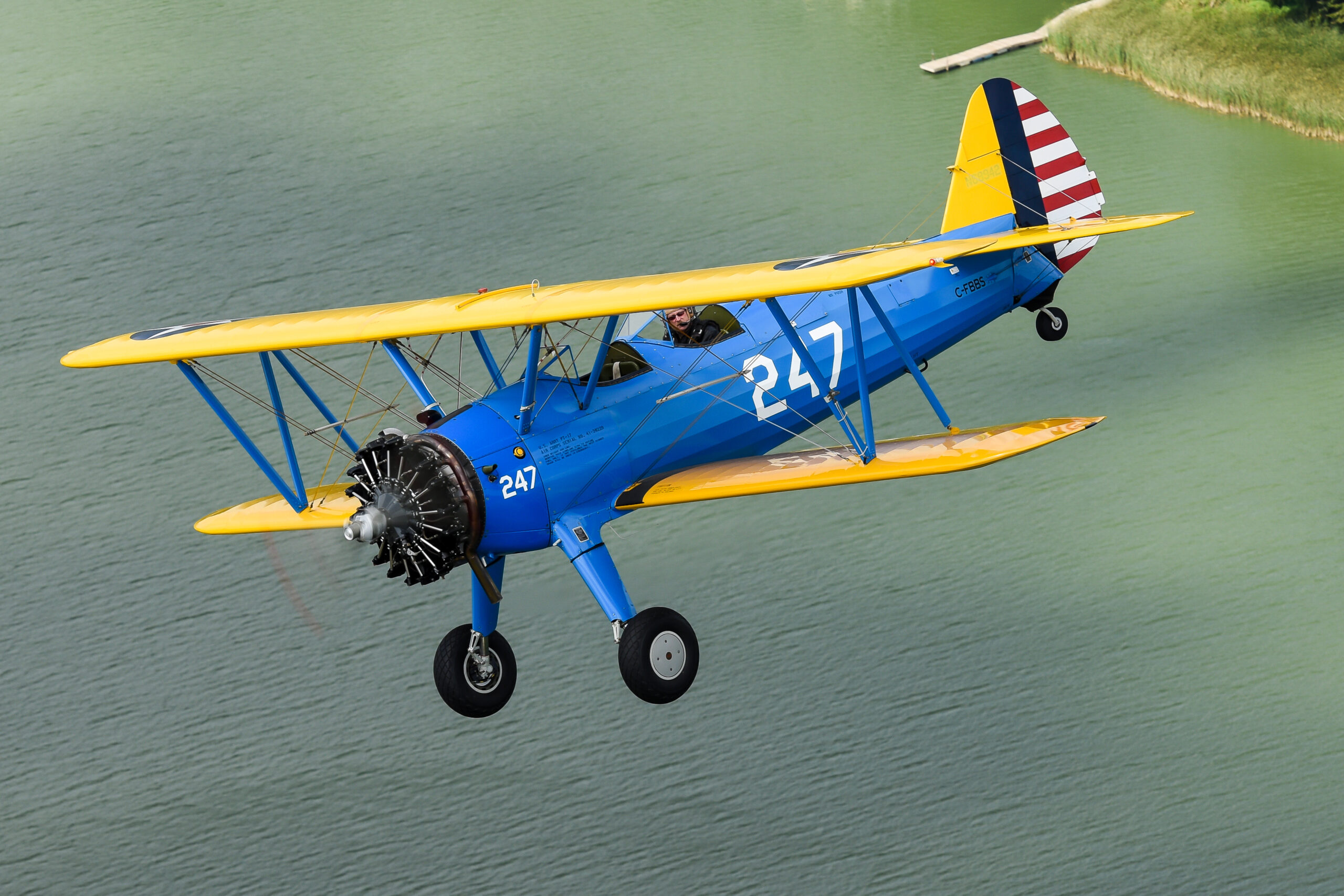
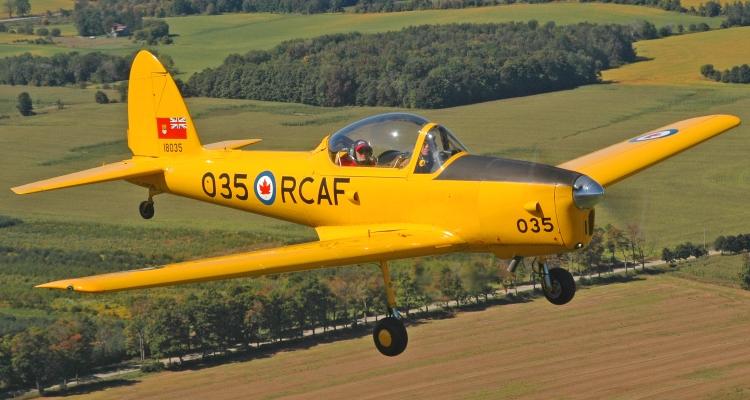
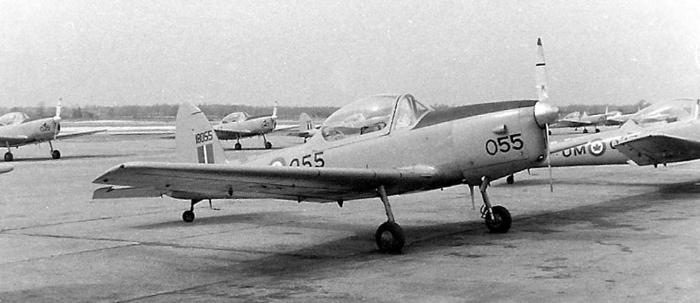
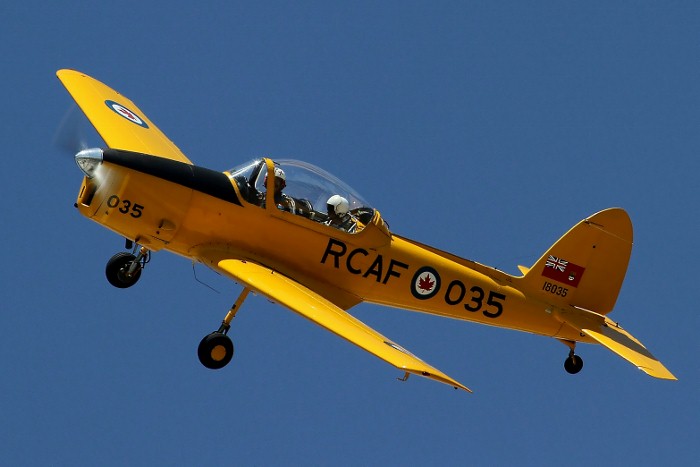
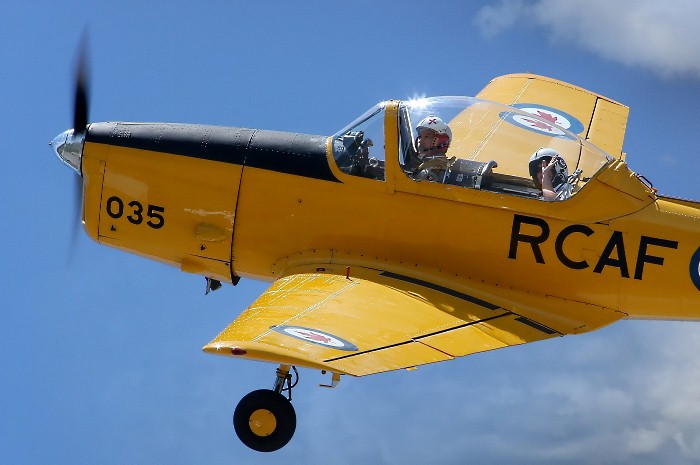
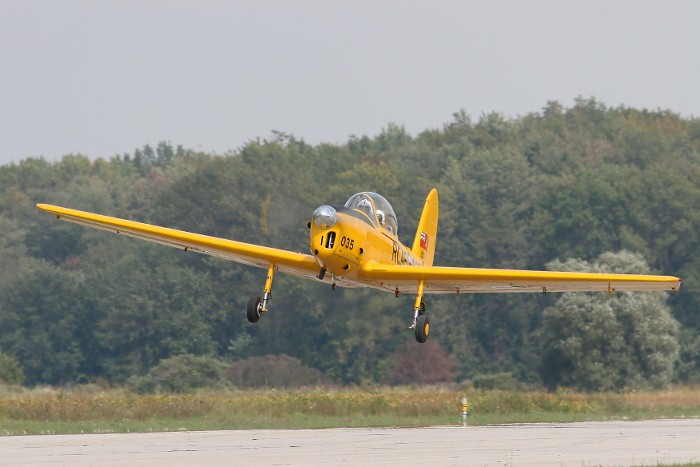
de Havilland canada
dhc-1b-2-s5 chipmunk
De Havilland Aircraft of Canada started the design of a primary trainer to replace the legendary Tiger Moth in October 1945 and the prototype flew seven months later in May 1946, from Downsview, (Toronto), Ontario. The fuselage was of all-metal, stressed skin construction as were the fin and tailplane. The single spar wing had a stressed skin leading edge, while the rear portion of the wing was fabric-covered. The wing was stressed for 9g, a factor which contributed to its popularity as an aerobatic aircraft.
The Canadian Warplane Heritage Museum’s Chipmunk was built at Downsview in 1956. The aircraft served with Canadian Forces Training Command until 1971, when it was purchased by John Weir, one of the Museum’s founders. John had been a fighter pilot and a prisoner of war in Stalag Luft III, the camp made famous by the “great escape” of 76 Allied aircrew in 1944. He donated the aircraft to the Museum 1973.
Consolidated pby-5a canso
The successful PBY line of flying boats was designed in 1933, in Buffalo, NY. The prototype first flew from Lake Erie in March 1935 and eighteen months later, the first PBY-1 flying boat went into service with the US Navy. The PBY had a very long range and a large load-carrying capacity. Development continued and by 1939 the amphibious PBY-5A version, with a tricycle undercarriage, was ready for manufacture.
The Canadian Warplane Heritage Museum’s Canso was manufactured in 1944, by Canadian Vickers in Montreal and served with the RCAF until 1961. It continued in commercial operations until 1995. The Canso was acquired in 1995 through generous donations from Canadians Resident Abroad Inc. and the Beamish Family. It is now painted in the colours and markings of RCAF No. 162 Squadron and is dedicated to Flt. Lt. David Hornell, VC, who was awarded a posthumous Victoria Cross. On June 24 1944, he and his crew sank the German submarine U-1225. During the attack, the aircraft was shot down and Hornell and his crew spent more than 20 hours floating in the cold Atlantic, before being rescued. Sadly, Hornell died from exposure shortly after his rescue.
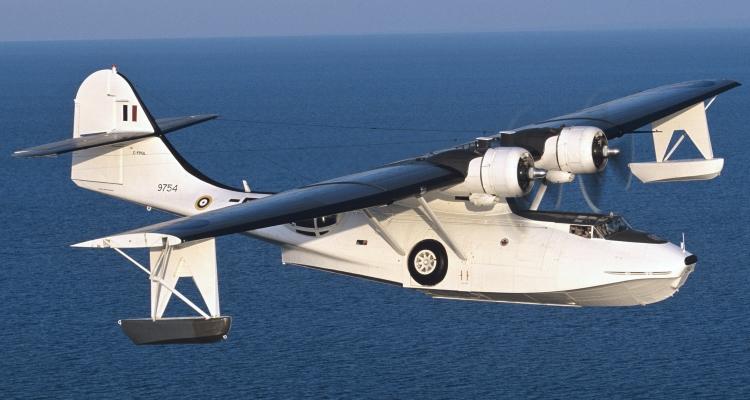
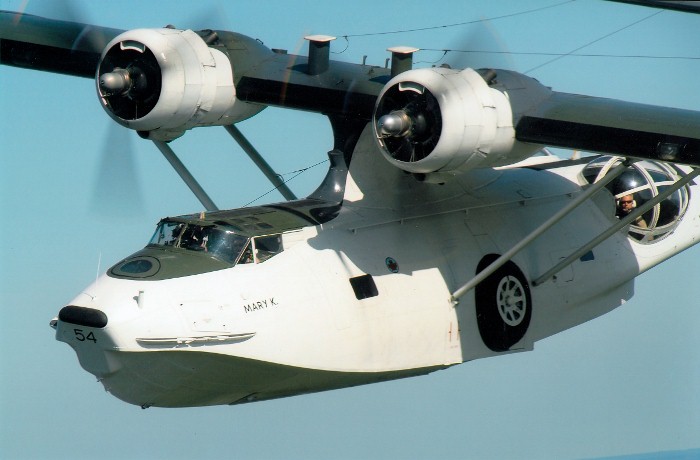
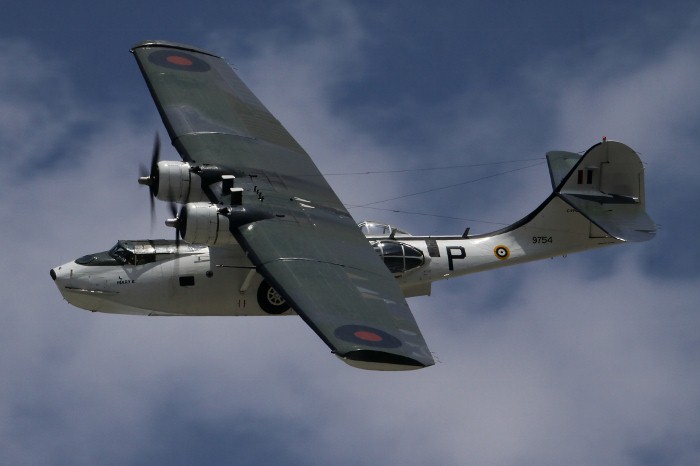
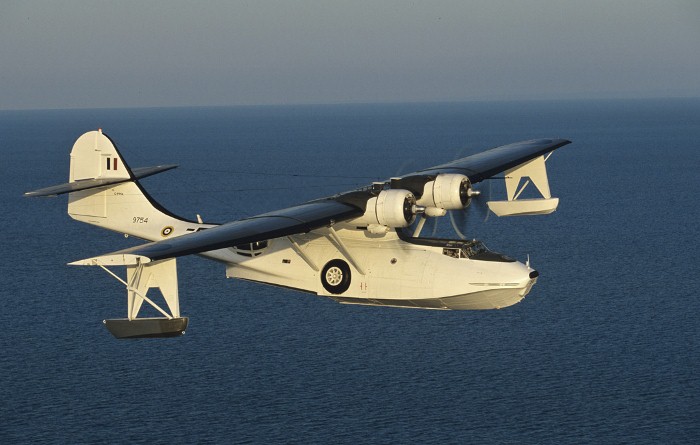
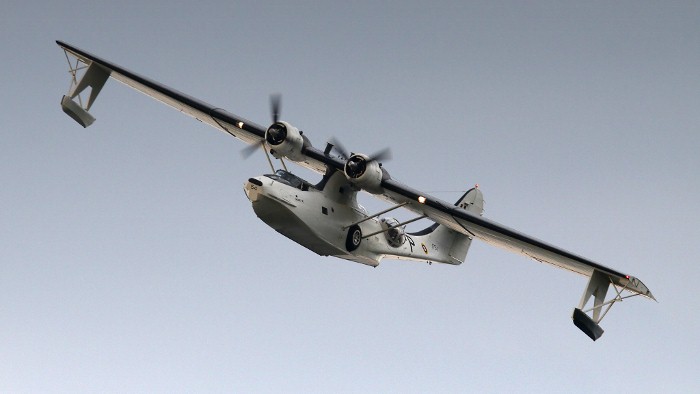
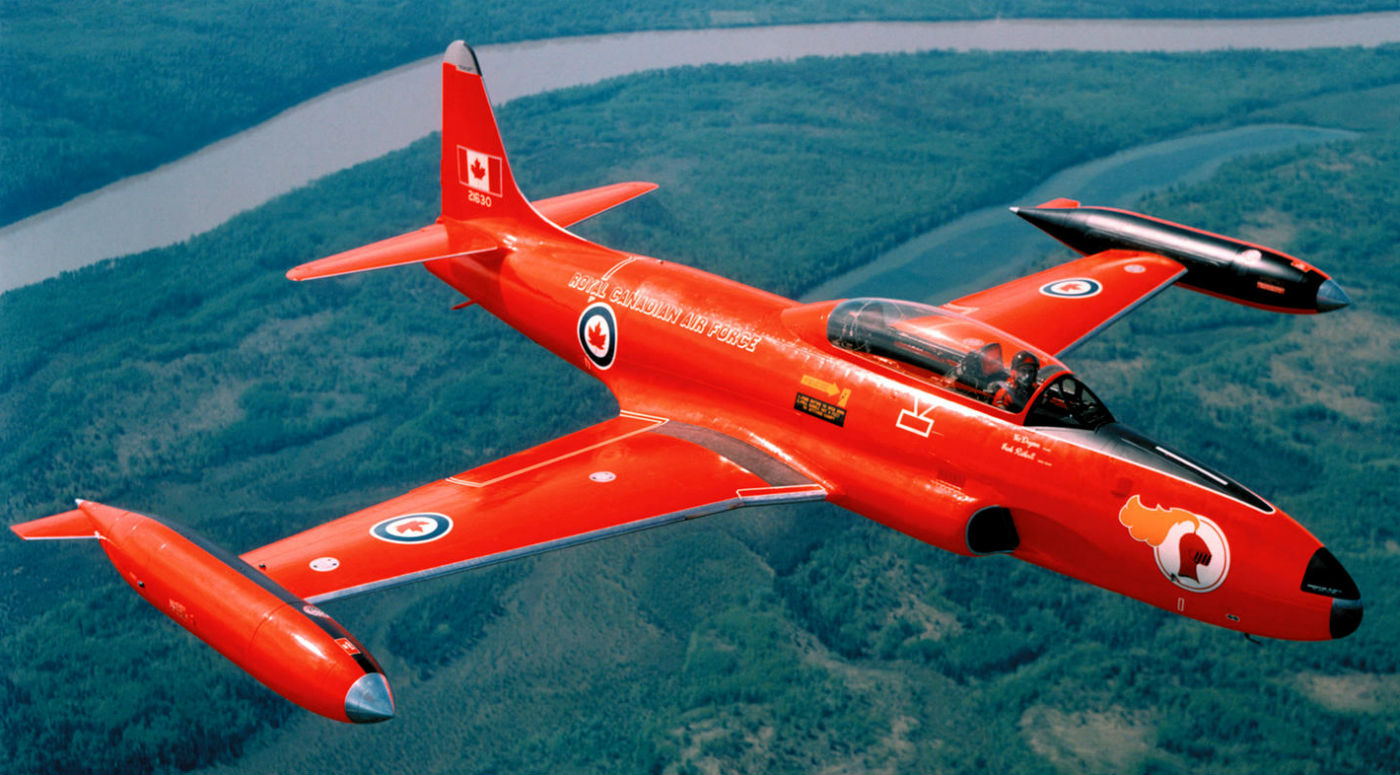
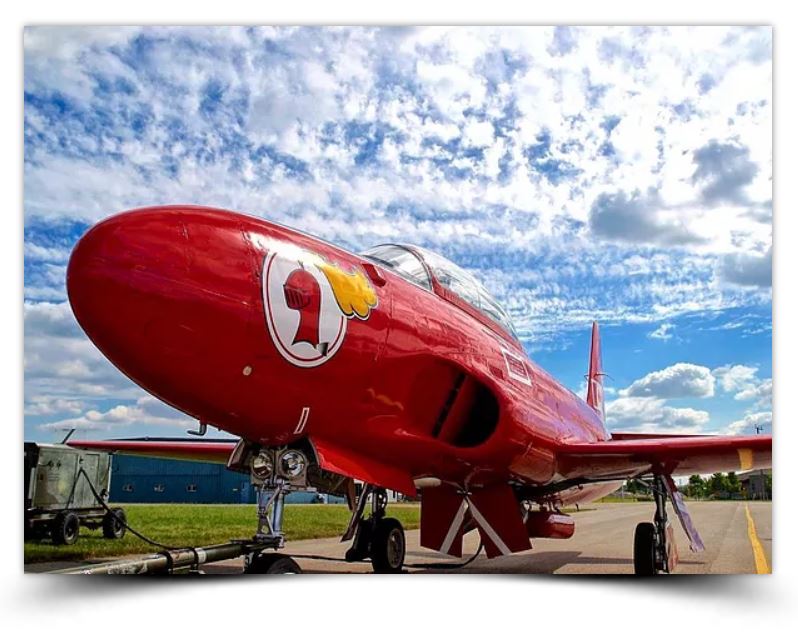
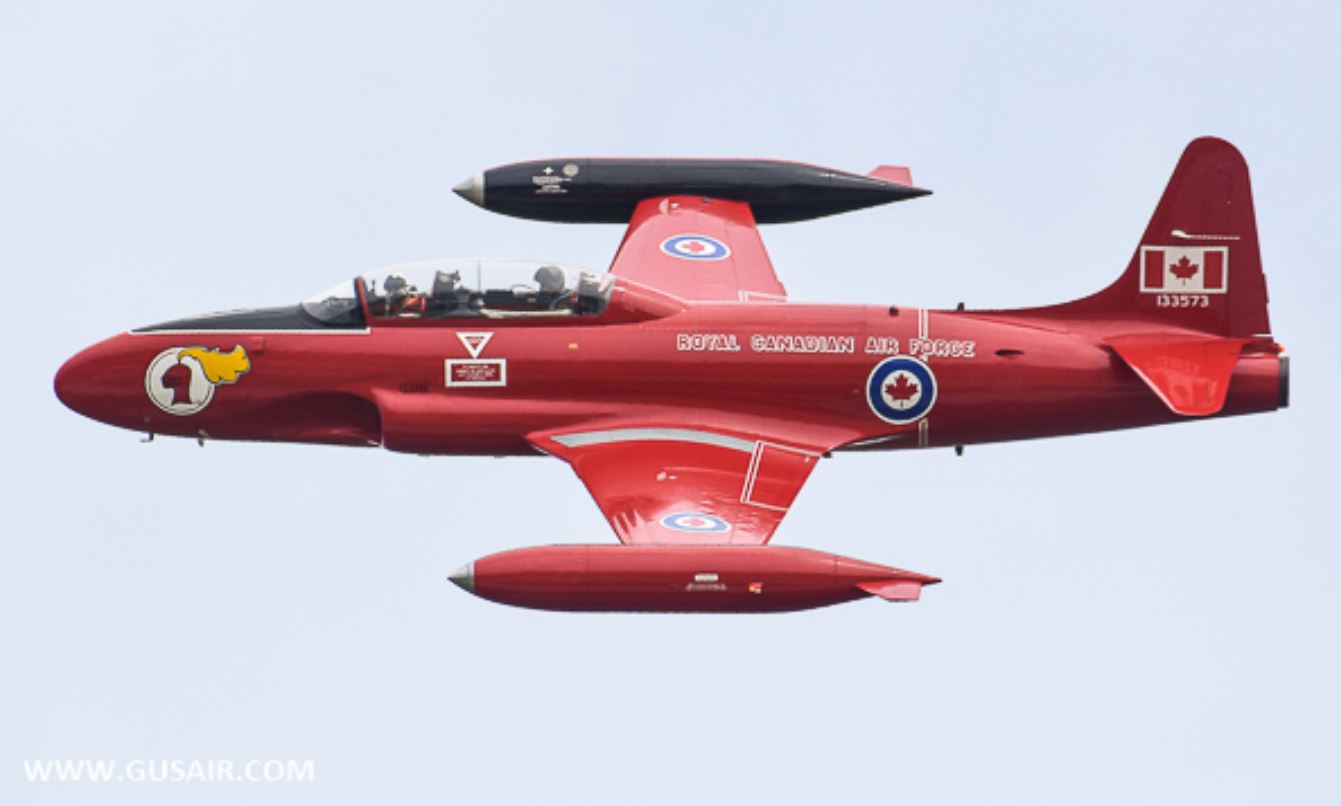
canadair ct-133 "Red knight"
The Red Knight was a Canadian air force aerobatic display aircraft that operated from 1958 to 1969., The Red Knight performed at airshows around North America, often appearing as an opening act for or in conjunction with the Golden Hawks display team and later the Golden Centennaires, Canada’s contemporary aerobatic teams. The JAM CT-133, painted in the Red Knight livery, still flys at air shows and is available for member flights. Check the JAM Events page for performance and flight dates.
AERO L-29 DELFIN
The Aero L-29 Delfin (dolphin), NATO designation Maya, was Czechoslovakia’s first locally designed jet aircraft, produced by Aero Vodochody. First flown in 1959, production commenced in 1963 and ceased in 1974 with over 3600 built. The L-29 won a Soviet design competition and became the standard jet trainer for most Eastern Block countries, except Poland. It was also exported to a number of countries.
Waterloo Warbird’s L-29 was built in 1972 for the Soviet Air Force and imported to the United States in 2002 from Estonia. Viper North acquired our aircraft in 2007 and brought it to Canada in 2011. Just prior to Viper North’s acquisition, the original jet engine was upgraded to a Rolls Royce Viper 540, resulting in a 70% increase in thrust. The increase in power has given this aircraft amazingly high performance for its size and weight. In an effort to recognize the current turmoil enveloping Ukraine, Waterloo Warbirds has decided to change the current Soviet-era Russian markings to Ukrainian Air Force (L-29) markings.
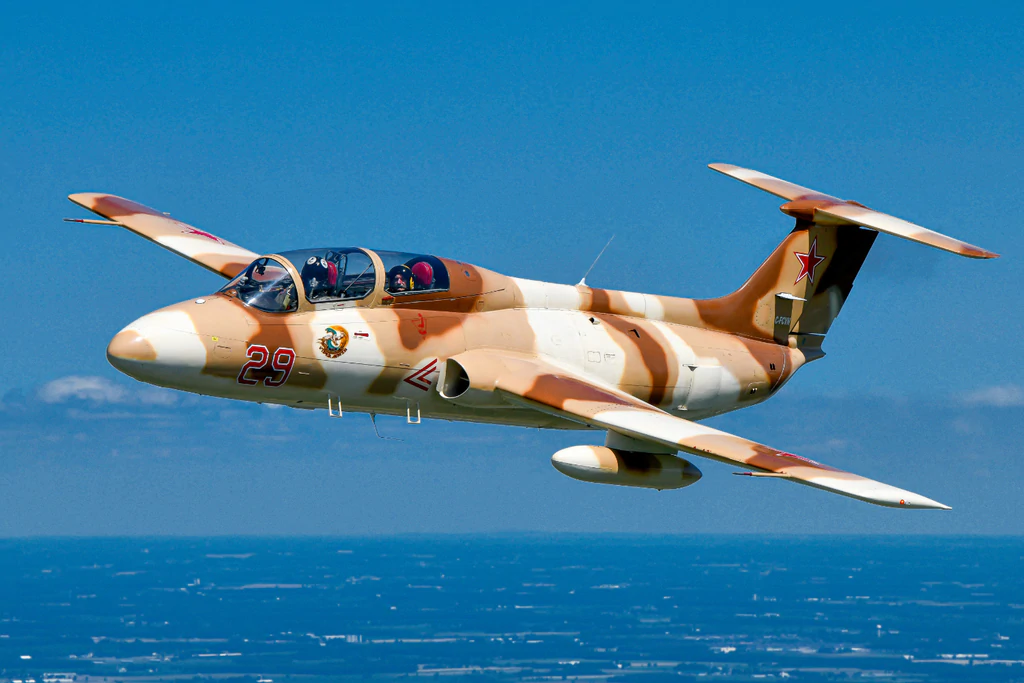
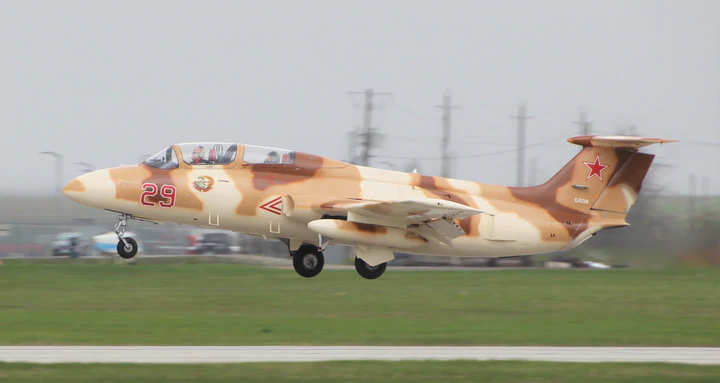

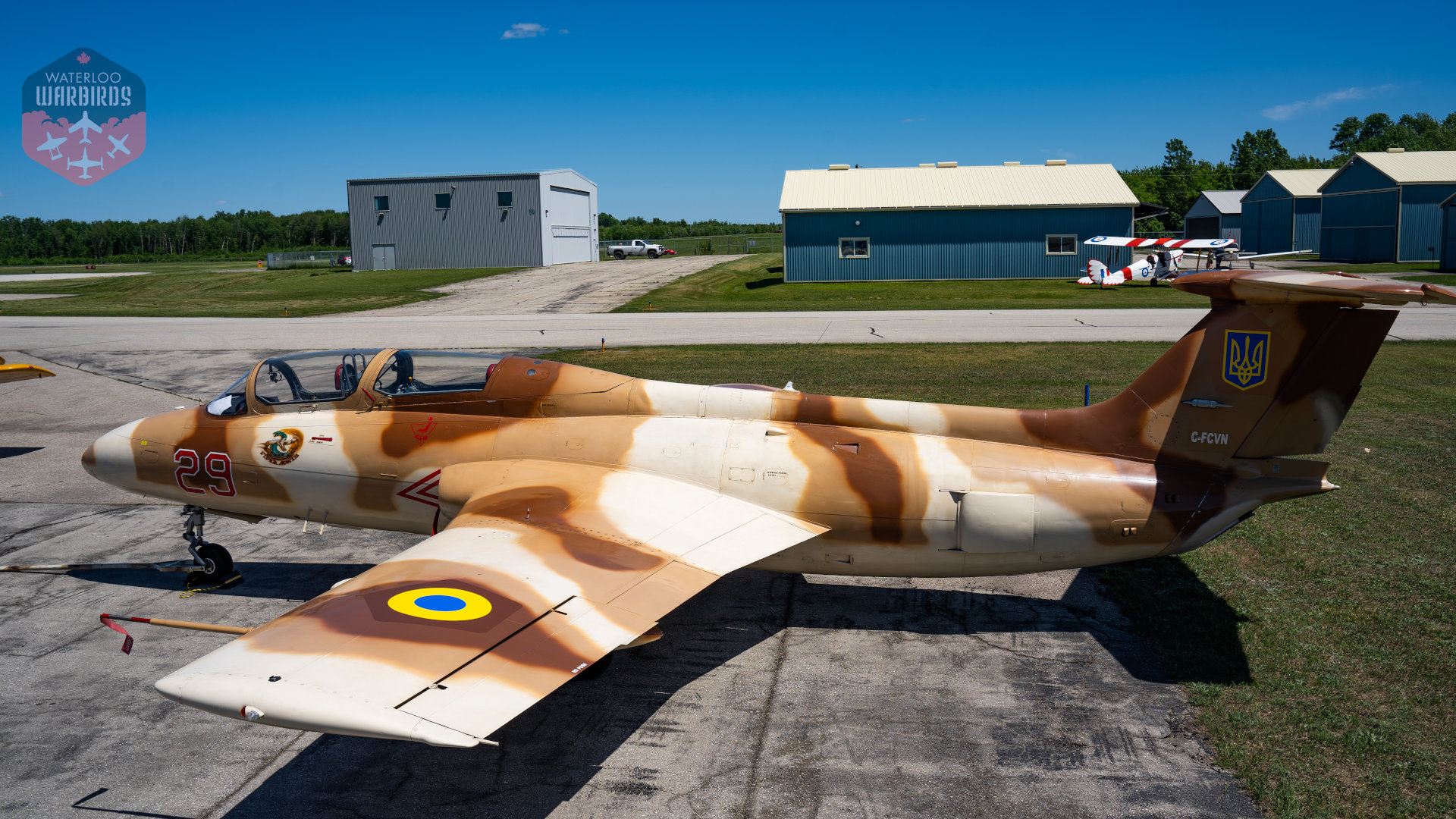
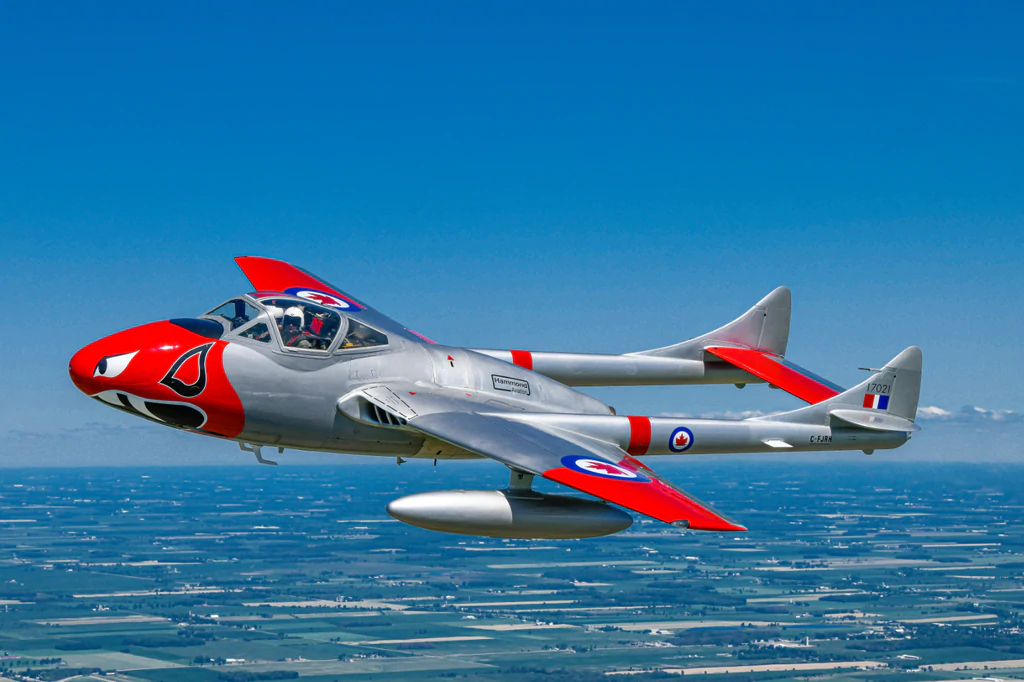
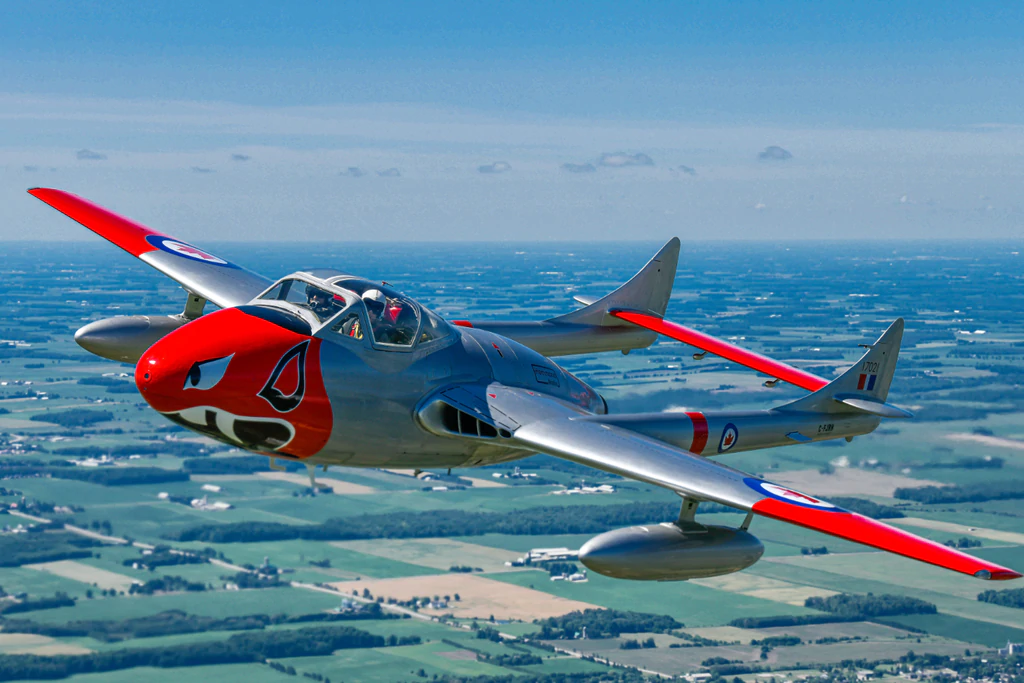
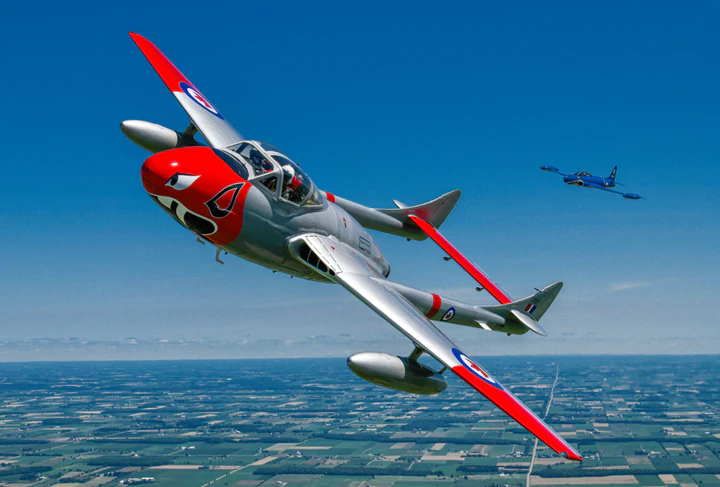
De Havilland Vampire
The De Havilland Vampire was developed in 1943 in Britain and just missed seeing action with the Royal Air Force in WWII. It is a descendant of the De Havilland Mosquito and as such shares some interesting structural aspects. Although the Vampire did not see action in the War, it immediately became Great Britain’s front-line operational jet fighter and had much success in this role. It was the first jet aircraft to cross the Atlantic Ocean and also the first jet to land and take off from an aircraft carrier.
Waterloo Warbird’s Vampire is a DH-115 T55 trainer that was built in 1958 under license in Switzerland by Eidgenössisches Flugzeugwerk Emmen, for the Swiss Air Force as U-1213 (airframe no. 973). She was originally armed with four 20mm Hispano cannons and was used as an advanced trainer. DH-115 T55 Vampires served in the Swiss Air Force from 1953 to 1990. U-1213 was struck off service in 1990, sold at auction in Sion in March of 1991 and issued US civil registration N935HW, being purchased by a private company in Paoli, Pennsylvania.
RCAF CC-144 Challenger
The CC-144 Challenger is used to transport government officials and foreign dignitaries. It also supports military operations in Canada and around the world.
The Challenger can quickly deliver passengers almost anywhere. Some of the Royal Canadian Air Force’s Challengers are equipped to support emergency medical evacuations. They also have successfully supported many humanitarian and diplomatic missions.
